This is an ongoing list of Stanford Bio-X affiliated faculty who have expressed interest in hosting and mentoring a fellow through the Bio-X/Novo Nordisk Foundation Visiting Scholar or Visiting Postdoc Fellowship Program. Applicants can also check the entire list of Bio-X affiliated faculty to search for faculty of specific research fields. Please reach out to Dr. Heideh Fattaey and Bio-X if you have any questions or need help during this process.
Prospective applicants can learn more here. This year's application has closed.
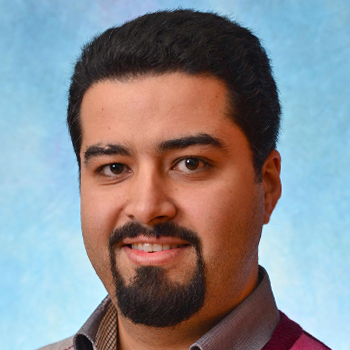
Ehsan Adeli - Assistant Professor (Research) of Psychiatry & Behavioral Sciences (Public Mental Health & Populations Sciences)
Research interests: The Stanford Translational AI (STAI) Lab unites interdisciplinary researchers from fields such as Artificial Intelligence (AI), Computer Vision (CV), Neuroscience, Medical and Neuro Imaging, and Psychiatry, with the goal of addressing critical challenges in Precision Healthcare and Mental Health. Our mission is twofold: to drive innovation both in AI methodologies and in their real-world clinical applications. Our group consistently publishes cutting-edge research in top-tier AI and CV conferences, while also translating these technologies into impactful clinical applications that are featured in leading medical and interdisciplinary journals. We focus on identifying technological gaps in clinical settings and strive to develop AI-driven solutions to bridge those gaps, with an emphasis on improving diagnosis, treatment, and patient outcomes. Please visit our Projects page to explore the full scope of our work and its potential to transform clinical practice through AI innovation.

Raag Airan - Assistant Professor of Radiology (Neuroimaging) and (by courtesy) of Psychiatry and Behavioral Sciences
Research interests: The Airan Lab develops and clinically translates novel techniques for targeting drug delivery to the nervous system, largely using focused ultrasound. The current focus of the effort centers around the development, validation, and clinical translation of a nanoparticle system for ultrasound-targeted delivery of a variety of therapeutic agents including small molecule drugs, proteins, and viruses. Check out the lab website!

William Allen - Assistant Professor of Developmental Biology
Research interests: The Allen Lab aims to understand fundamental principles underlying the homeostasis, plasticity, and resilience of cells and circuits in the mammalian brain. Our approach bridges molecular, cellular, and systems neuroscience to obtain comprehensive insights into mechanisms of brain function and dysfunction at multiple scales. In particular, we are interested in how the brain maintains its function in response to damage and stressors, both acutely and cumulatively over an animal's lifetime. To answer previously intractable questions and expand our ability to engineer biological systems, we develop new cutting-edge technologies that span computation, synthetic biology, imaging, genomics, and neuroscience. Our ultimate goal is to engineer the brain to restore lost function, improve resilience, or even rejuvenate aged cells. Check out the lab website!
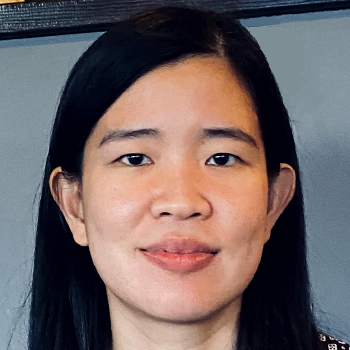
Lay Teng Ang - Assistant Professor of Urology
Research interests: Inspired by lessons in developmental and stem cell biology, my research has charted the branching lineage pathways through which human pluripotent stem cells (hPSCs) differentiate into a diverse array of cell-types. At each lineage choice, we provide the signals that specify a desired cell-type, while inhibiting the signals that promote alternate fates. Using this strategy, we have successfully converted hPSCs into highly pure populations of distinct cell-types, including epithelial cells (e.g., liver, bladder cells), endothelial (e.g., artery and vein cells) and mesenchymal cells (e.g., smooth muscle cells and fibroblasts). Moving forward, my new lab will use developmental and synthetic biology tools to generate functional and "mature" cell-types for applications in regenerative medicine and tissue engineering. Check out the Ang lab website!

Eric Appel - Assistant Professor of Materials Science and Engineering
Research interests: The Appel Lab at Stanford University integrates concepts and approaches from supramolecular chemistry, natural/synthetic materials, and biology to develop supramolecular biomaterials that can act as tools to better understand fundamental biological processes and to engineer advanced healthcare solutions. We focus heavily on developing technologies for precisely controlled delivery of molecular cargo that can form the backbone of new drug products to improve the treatment of diseases such as diabetes or to engineer more potent and safe vaccines and immunotherapies for cancer. Check out the lab website!

Euan Ashley - Professor of Medicine (Cardiovascular), of Genetics, of Biomedical Data Science, and (by courtesy) of Pathology
Research interests: The Ashley lab is focused on the science of precision medicine. We study the human genome and apply computational approaches like machine learning to understand the integrated effects of genes and proteins on human health and disease. We are particularly interested in the extremes of human performance. We are fascinated by the heart - how it develops, adapts, contracts, and fails. In our wet lab, we explore cardiac biology, from the whole heart all the way down to single cells including induced pluripotent stem cells from our patients. We push them towards a cardiac myocyte fate and characterize them using a variety of bioengineering approaches. Developing new therapies is a near term goal and several of our discoveries are the focus of patents or are being actively pursued by pharmaceutical and biotechnology partners. Our group is one of the most diverse on campus - from mathematicians to molecular biologists, undergrads to junior faculty, physicists to genetic counselors. We enjoy diversity and love to work and play together. Check out the lab website!

Zhenan Bao - Professor of Chemical Engineering and (by courtesy) of Materials Science and Engineering and of Chemistry
Research interests: The Bao Lab works at the interface of electronics and biological systems. The lab is developing electronic skin for wearables and implantables that can address unique challenges not solvable by conventional rigid electronics. Our work involve developing soft electronics that can “grow” with biological systems (Morph-E), soft sensors that can sense neurotransmitters (NeuroString) and genetically targeted chemical assemblies (GTCA), such as conducting polymer for modulating neuron behavior. Our lab consists of a large and diverse group of students and postdocs from Chemistry, Physics, Biochemistry, Chemical Engineering, Material Science, Electrical Engineering, Mechanical Engineering and Bioengineering. Our projects ranges from material design, synthesis, fabrication, electronics system design to biointerface. Check out the lab website!
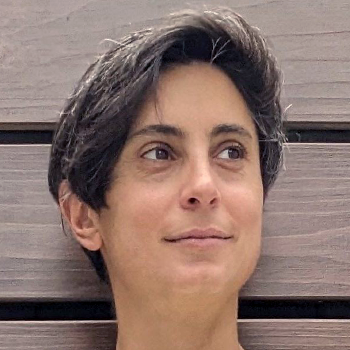
Vanessa Barone - Assistant Professor of Biology
Research interests: We explore how variation in the cell behaviors that determine the physical properties of tissues contribute to the evolution of development. We use a multidisciplinary approach, at the interface between cell biology, evolution of development, and theoretical modeling - that spans across biological scales, integrating processes at the molecular, cellular and tissue levels. Check out the lab website!

Glaivy Batsuli - Assistant Professor of Pediatrics (Hematology & Oncology)
Research interests: The Batsuli Lab is interested in understanding mechanisms of the humoral immune response to coagulation proteins factor VIII and factor IX in order to devise therapies that promote factor tolerance. We also seek to better understand how factor protein structure and biochemical properties affect factor recognition by the immune system. Our approach to investigation includes coagulation, immunology, biochemistry, omics, and mouse and human models of disease. Check out the lab website!

Matthew Bogyo - Professor of Pathology and of Microbiology & Immunology and (by courtesy) of Chemical & Systems Biology
Research interests: The Bogyo Lab is interested in developing and applying chemical tools to both image and dissect the functional roles of hydrolases in a number of human health conditions. We are currently using synthetic chemistry and biological display methods to build new covalent binding probes that allow enzyme activity to be selectively inhibited as well as imaged in complex biological samples including cells, tissues and whole organisms.We are specifically interested in hydrolase enzymes important for cell signaling and pathogenesis in cancer and various microbes including S. aureus, C. difficile and gut commensal bacteria. Check out the lab website!

Paul Bollyky - Associate Professor of Medicine (Infectious Diseases) and of Microbiology and Immunology
Research interests: The Bollyky lab at Stanford University studies innate immunity associated with wound and lung infections. We focus on Pseudomomas biofilm infections and bacteriophages. We welcome fellows interested in immunology, microbiology, and infectious diseases. Check out the lab website!

James Brooks - Keith and Jan Hurlbut Professor of Urology
Research interests: My laboratory has broad interests in developing and implementing disease biomarkers in benign and malignant urological diseases. My group has used genomic, proteomic and metabolomic approaches to identify candidate molecular biomarkers for use in disease diagnosis, prognosis, monitoring, and assessing response to treatments. For biomarkers of particular interest, we have sought to understand mechanistically how they affect disease etiology, progression, and response to therapy. Recently, we have been interested in developing novel therapies and biomarkers for prostate and kidney cancer and benign prostatic hyperplasia stemming from our genomic and metabolomic analyses of these diseases. We have developed mouse model systems and patient derived xenografts to attempt to replicate human diseases. From the clinical practice at Stanford, we have assembled an infrastructure to support our work, with a broad array of serum and urine samples, frozen tissue samples, and formalin fixed paraffin embedded samples, incorporating the latter in a number of clinically annotated tissue microarrays. I have participated in and held leadership roles in a number of multi-institutional studies and consortia focused on cancer biomarkers, early detection and genomics including the TCGA Pilot project, the Early Detection Research Network (EDRN), the Canary Foundation Prostate Cancer Group, the Molecular and Cellular Characterization of Screen Detected Cancer Laboratories (MCL), and the Alliance of Glycobiologists for Cancer Research. Our current efforts focus on understanding the cellular architecture of human benign prostatic hyperplasia using single cell analytic techniques including scRNA-Seq, spatial transcriptomics, CODEX and MIBI-TOF. We are also interested in the role of glycoprotein changes in cancer as immune checkpoints and possible therapeutic implications.
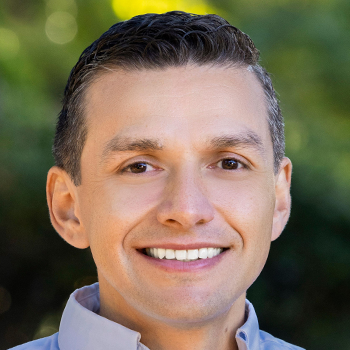
Andres Cardenas - Assistant Professor of Epidemiology & Population Health and (by courtesy) of Pediatrics
Research interests: The Cardenas Lab leverages data and samples from epidemiological studies to investigate the impact of the environment on the epigenome and its contribution to the development of health and disease. We use high-dimensional epigenetic and multi-omic data within high-quality epidemiological studies to test novel hypotheses on the fetal origins of health and disease, epigenetic aging, and early-life adversity. We specialize in environmental epigenetics, DNA methylation data, epidemiological methods and environmental contaminants. Check out the lab website!

Ovijit Chaudhuri - Associate Professor of Mechanical Engineering
Research interests: The Chaudhuri group is interested in elucidating cell-extracellular matrix interactions, and the roles of these interactions in mediating cell migration, cell division, stem cell differentiation, and breast cancer progression. Our interests are in both understanding mechanotransduction, or how cells sense mechanical cues, and the biophysics of how cells generate force to drive specific biological processes. Our approach is to use engineered biomaterials for 3D cell culture that allow precise and independent manipulation of mechanical properties. Check out the lab website!
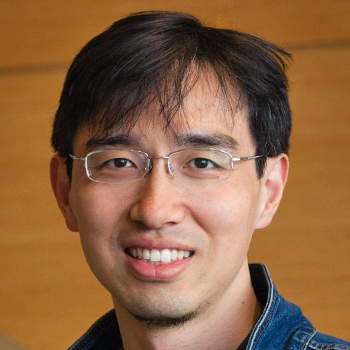
Le Cong - Assistant Professor of Pathology (Pathology Research) and of Genetics
Research interests: The Cong Lab is dedicated to advancing bioengineering through the integration of artificial intelligence and large language models. Our recent iinterests include developing AI agents for gene editing and screening, exemplified by CRISPR-GPT, to discover novel therapy for immunological diseases. Additionally, we work on the generative design of proteins/RNAs, such as gene-editors for large insertion, mRNA vaccines, and therapeutic proteins. Our interdisciplinary team combines expertise in computational biology, machine learning, and experimental sciences to pioneer innovative solutions in precision medicine. We value diversity and collaboration and are always open to new ideas! For more information, please visit our lab website.

Steven Corsello - Assistant Professor of Medicine (Oncology) and (by courtesy) of Chemical & Systems Biology
Research interests: The Corsello Laboratory operates at the intersection of functional genomics and chemical biology, with the goal of advancing novel molecular mechanisms of cancer inhibition to clinical use. Our research aims to 1) leverage functional genomics to determine new anti-cancer mechanisms of small molecules, 2) develop novel targeted therapies against solid tumors, and 3) develop the next generation of phenotypic assays and analysis methods to discover drug activities. Check out the lab website to learn more!

Markus Covert - Professor of Bioengineering and (by courtesy) of Chemical and Systems Biology
Research interests: The Covert Lab develops novel experimental, computational and mathematical technologies with the overall goal of creating dynamic and predictive simulations of cellular behavior. The lab is probably best known for constructing the first "whole-cell" computational model, which explicitly represents all known gene functions and molecules in a bacterial cell - an advance which was recently highlighted by the journal Cell as a highlight publication of the 40-year history of that journal. Whole-cell modeling remains an active effort in the lab; further ongoing work has led to several other "firsts", including: the creation of novel fluorescent reporters of kinase activity in single cells, deep learning approaches to dramatically accelerate image analysis for live-cell microscopy, and the simultaneous measurement of transcription factor activity and global transcriptome in the same individual cell. Check out the lab website!

Martha Cyert - Professor of Biology
Research interests: By studying calcineurin, we aim to discover and elucidate new Ca2+-regulated signaling pathways. The calcineurin phosphatase is activated by Ca2+ and calmodulin, and thus dephosphorylates proteins only when Ca2+ signaling is triggered by a hormone, growth factor, neurotransmitter etc. In yeast, we discovered how calcineurin allows cells to survive environmental stress (Goldman et al, 2014). Currently, we are studying human calcineurin which is ubiquitously expressed and plays critical roles in the nervous, cardiac and immune systems (Wigington et al. 2020). Calcineurin is best known for activating the adaptive immune response by dephosphorylating the NFAT transcription factors, and is the target of widely prescribed immunosuppressant drugs, FK506 (tacrolimus) and Cyclosporin A. However, these drugs cause many adverse effects due to inhibition of calcineurin in non-immune tissues, where the majority of calcineurin substrates and functions remain to be discovered. Our current strategies to elucidate human calcineurin signaling include experimental and computational methods. We are also elucidating pathways controlled by CNA beta1, a membrane-associated isoform of calcineurin that does not regulate NFAT but rather acts on lipid signaling pathways. A new collaborative project aims to uncover calcineurin regulated pathways in the pancreas that contribute to pancreatitis. Check out the lab website!

Gary Darmstadt - Professor of Pediatrics (Neonatology)
Research interests: Dr. Darmstadt is Associate Dean for Maternal and Child Health, Professor of Neonatal and Developmental Medicine, and Co-PI of the Prematurity Research Center in the Department of Pediatrics. Dr. Darmstadt’s research focuses on advancing maternal and child health and development in low resource settings and advancing gender equality and health globally. He has extensive experience in the generation and use of global health data and in the development, testing and scaling-up of global health innovations. In one of his more recent projects, Dr. Darmstadt, together with his collaborators, has developed a multi-site cohort of mothers and their infants in low-income countries in sub-Saharan Africa and South Asia. Applying machine learning methodology on the collected data has been providing a unique opportunity to develop relevant prediction models to improve maternal and infant health in these low-income settings. Dr. Darmstadt’s profile: https://profiles.stanford.edu/gary-darmstadt

Adam de la Zerda - Associate Professor of Structural Biology and (by courtesy) of Electrical Engineering
Research interests: Histological haematoxylin and eosin–stained (H&E) tissue sections are used as the gold standard for pathologic detection of cancer, tumour margin detection, and disease diagnosis1. Producing H&E sections, however, is invasive and time-consuming. Non-invasive optical imaging modalities, such as optical coherence tomography (OCT), permit label-free, micron-scale 3D imaging of biological tissue microstructure with significant depth (1-2 millimeters) and large fields-of-view, but are difficult to interpret and correlate with clinical ground truth without specialized training. Our lab develops a virtual biopsy, using generative neural networks to synthesize virtual H&E sections from OCT images. We have demonstrated the core technology by converting OCT to histology images ex-vivo and are looking for experts to help push the technology forward either by building better machine learning models for tumor diagnosis or by developing the chemistry and biology required to bring this technology in vivo. This technology will enable physicians to readily incorporate OCT imaging into their clinical practice, circumventing the lengthy step of an invasive biopsy procedure. Check out the lab website!

Tushar Desai - Professor of Medicine (Pulmonary, Allergy & Critical Care Medicine)
Research interests: The Desai lab is interested in lung biology, disease pathophysiology, and cell-based therapies, focused on lung stem cells, acute lung injury, Idiopathic Pulmonary Fibrosis, Cystic Fibrosis and lung adenocarcinoma. We develop and apply ex vivo approaches enabling functional studies of primary human lung cells, including organoids and intact lung slice cultures. We also employ in vivo mouse models for mapping the activity of transplanted human lung stem cells and advanced microscopy techniques for imaging individual cells in 3D. We welcome fellows interested in stem cells, lung biology, lung cancer, tissue staining, and advanced microscopy techniques. Check out the lab website!

Joseph DeSimone - Professor of Radiology (Molecular Imaging Program at Stanford/Nuclear Medicine) and of Chemical Engineering
Research interests: In 2015, the Desimone lab reported the invention of the Continuous Liquid Interface Production (CLIP) 3D printing technology (Science 2015), which overcame major fundamental limitations in polymer 3D printing and is now used commercially in diverse industries. Vast opportunities also exist to use CLIP to pursue next-generation medical devices and prostheses. For example, new design opportunities exist in device-assisted drug delivery, especially in oncology using iontophoresis (PNAS 2016), as well as in early detection, including to improve specimen collection, device performance (e.g. microfluidics, cell sorting, supporting growth and studies with human organoids), and imaging (e.g. PET detectors, ultrasound transducers). We are also interested in pursuing therapeutic devices in pediatric medicine to help advance treatments for conditions including cleft palate and plagiocephaly, as well as pursuing the design of a single-digit micron resolution printer to advance microneedle designs as a potent delivery platform for vaccines. Check out Dr. DeSimone's Stanford profile!

Renumathy Dhanasekaran - Assistant Professor of Medicine (Gastroenterology)
Research interests: The Dhanasekaran Laboratory is dedicated to understanding the immune biology of liver cancer and identifying new ways to improve treatment outcomes for patients. Our research focuses on using patient-derived models, including 3D tumoroids, to study how tumors interact with the immune system. By combining these models with cutting-edge spatial omics technologies, we aim to uncover how tumor cells and immune cells communicate, evolve, and influence disease progression. We are interested in mentoring with interests in cancer biology, immunology, and advanced analytical techniques. Check out the lab website!

Ron Dror - Cheriton Family Professor and Professor (by courtesy) of Structural Biology and of Molecular & Cellular Physiology
Research interests: The Dror lab uses cutting-edge computational approaches -- including physics-based simulations and machine learning -- to understand biomolecular structure, how it changes dynamically, and how we can exploit it for a range of applications, especially the design of safer, more effective medicines. We work in close collaboration with leading academic experimentalists and with a variety of companies. We aim not only to develop new computational methods but also to have a real impact on biology and drug discovery. Some members of the lab thus delve deeply into the study of specific biological systems, such as G-protein-coupled receptors (GPCRs). Check out the lab website!
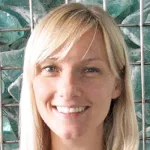
Laramie Duncan - Assistant Professor of Psychiatry & Behavioral Sciences
Research interests: The Duncan Lab is at the intersection of psychology, statistical genetics, and neuroscience. We use massive datasets and primarily computational approaches to identify risk factors and mechanisms contributing to mental health problems like schizophrenia and post-traumatic stress disorder (PTSD). Our current projects include 1) sex differences in PTSD and related disorders; 2) translation of schizophrenia genetic risk variants into biological mechanisms; 3) human postmortem tissue studies in schizophrenia; 4) sex hormones and other biomarkers for psychiatric disorders. Check out the lab website!
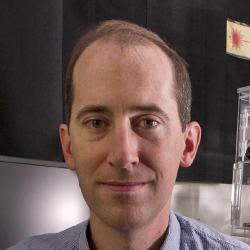
Alexander Dunn - Associate Professor of Chemical Engineering
Research interests: The goal of the Dunn laboratory is to determine how molecular-scale information encodes the shape and physical properties of cells, tissues, and whole organisms. To do so, they use a combination of sophisticated microscopy, single-molecule biophysics, and theoretical modeling to explore how information propagates upwards across biological length scales. Check out the lab website!

Shirit Einav - Associate Professor of Medicine (Infectious Diseases) and of Microbiology and Immunology
Research interests: The pathogenesis of SARS-CoV-2 infection remains poorly characterized, and there are no biomarkers associated with severe infection. This in part due to the limited understanding of the specific cellular targets of this virus in the human lung and in PBMCs. Moreover, the cellular and molecular factors that govern differential clinical outcomes across genders, age, ethnicities, etc are unknown. Lastly, while multiple host-targeted approaches are currently being studied for the treatment of COVID-19, potential differences in the interpatient susceptibility to these drugs have not been assessed. We have established a unique PBMC-supplemented lung organoids model derived from normal human tissue. This project’s main goal is to characterize viral infection, inflammation and tissue injury in this lung organoid model and use it to monitor the host response to SARS-CoV-2 infection at a single cell level, define the relevant target cells, and monitor response to representative host-targeted approaches. Check out the lab website!

Jesse Engreitz - Assistant Professor of Genetics
Research interests: The Engreitz Lab is mapping the regulatory wiring of the genome to understand the genetic basis of heart diseases. This wiring includes millions of enhancers that tune gene expression in the thousands of cell types in the body. Yet, it has been unclear which enhancers regulate which genes — a massive and complex network that rewires in each cell type. To understand this network, we invent new genomics tools combining CRISPR and single-cell approaches; dissect molecular mechanisms of enhancer-gene communication; build computational models to map genome regulation; and apply these tools to connect human genetic variants to biological mechanisms of disease. Check out the lab website!

Neir Eshel - Assistant Professor of Psychiatry & Behavioral Sciences
Research interests: The Stanford Translational Addiction and Aggression Research (STAAR) lab focuses on the neural circuits of reward, aggression, and the intersection between the two. Current questions include: What is the economic value of dopamine release? How do neuromodulators influence aggression? What are the neural circuits of frustration? To answer these questions, we pair the latest neuroscience methods (fiber photometry, optogenetics, electrophysiology) with carefully-controlled behaviors (operant conditioning, social interaction) and sophisticated analyses (economic demand curves, machine learning). There are many opportunities for postdoctoral research; check out our lab website or write Dr. Eshel to find out more!
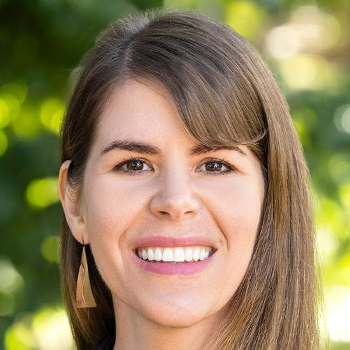
Patricia Rodriguez Espinosa - Assistant Professor of Epidemiology & Population Health
Research interests: Dr. Patricia Rodriguez Espinosa, PhD., MPH, is a native of Habana, Cuba. She is an Assistant Professor in the Department of Epidemiology and Population Health. She also serves as the Associate Director of Research for the Office of Community Engagement at Stanford Medicine and the Associate Core Leader for the Outreach, Recruitment and Engagement Core within the Stanford Alzheimer’s Disease Research Center. The ultimate goal of her research is to decrease health inequities among racial/ethnic minority populations, particularly Latinxs and immigrant communities, through transdisciplinary and community-engaged scholarship. Her research group aims to understand factors that create and maintain health inequities and use these insights to develop and test novel multi-level interventions and health promotion programs to address the inequity gap and that include multi-sectoral collaborations. The lab also centers around developing and advancing the science of Community-Based Participatory Research, citizen/community science, and other participatory research approaches. Current projects center around aging research, Alzheimer’s Disease and Related Dementias, and often involve working with local community-based organizations and community health workers.
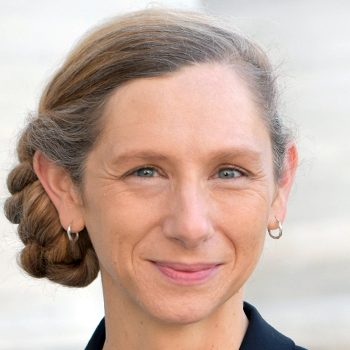
Ryann Fame - Assistant Professor of Neurosurgery
Research interests: The Fame lab probes interfaces of the brain and body during development. We study how the early cerebrospinal fluid (CSF) and choroid plexus bridge systemic cues (e.g., hormones) and more local signals (e.g., ions, growth factors) to support healthy brain development. We focus on how the CSF serves as a stem cell niche for the developing brain by using a combination of animal models, organoids, and collaborating with Neurosurgeons to access valuable patient samples and applying modern imaging, genomics, and synthetic neuroscience to probe their functions. Our vision is to harness interactions between brain development and CSF with the goal of improving outcomes for pediatric neurological disease. Check out the lab website!
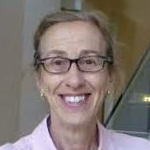
Wendy Fantl - Assistant Professor (Research) of Urology
Research interests: The Fantl lab applies state-of-the-art multi-parametric single cell technology platforms; specifically, mass cytometry (CyTOF) and a new multiplex imaging platform called CODection by indEXing (CODEX), combined with machine learning analysis approaches to reveal new insight into the underlying biology of ovarian and kidney cancers that is clinically translatable. In our latest mass cytometry study, we demonstrated that a decidual-like (dl)-NK cell infiltrating newly diagnosed ovarian tumors correlated with tumor mass. dl-NK cells are distinguishable from other NK cell phenotypes by their expression of the tetraspanin CD9. We found that NK cells acquired CD9 by trogocytosis from ovarian tumor cells where it is abundantly expressed. Our data indicate that CD9 confers NK cells with immune-suppressive properties and that a blocking CD9 antibody reversed these immune-suppressive effects. Our results have immediate implications for NK immunotherapy. The motivated candidate continues these studies and examines the role of NK cells in ovarian cancers and expands the study to kidney cancer. Check out Dr. Fantl's webpage!

Polly Fordyce - Assistant Professor of Bioengineering and of Genetics
Research interests: The central focus of the lab is leveraging tools and ideas from physics and engineering to develop technologies for quantitative, high-throughput measurements of macromolecular interactions and their cellular consequences at unprecedented scale. Recent technological advances in genomics and proteomics have driven an explosion in our knowledge of the molecular parts within cells. Interactions between these parts drive all biological processes, and the strength of these interactions predicts the timing and identity of downstream responses. Therefore, quantitative biophysical and biochemical measurements are critical to decipher these networks, predict how they are disrupted in disease, and manipulate them for therapeutic purposes. Platforms include spatially-encoded arrays of reaction chambers for quantitative, high-throughput enzymology (HT-MEK), Spectrally-encoded hydrogel beads for quantitative multiplexed bioassays in a single small volume (MRBLEs), and ultra-high-throughput phenotyping and selection (Dropception). Check out the lab website!
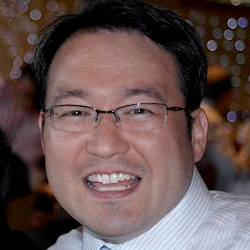
Richard Frock - Assistant Professor of Radiation Oncology (Radiation and Cancer Biology)
Research interests: Dr. Frock's group uses functional genomics to understand DNA double strand break (DSB) repair processes. They employ a state-of-the-art translocation sequencing platform that we are continually innovating, HTGTS, to map DSB junctions genome-wide. Dr. Frock's lab is particularly interested in how error-prone repair can be promoted over high fidelity repair and how these mechanisms can be exploited in non-cycling normal and cancer cells. To do this they use a variety of targeted DSB sources ranging from lymphocyte development (RAG1/2, AID) to engineered endonucleases (Cas9, TALEN) to detect off-target and other pathological DSBs (IR, ROS, nuclear process inhibitors, etc). Check out their lab website for more details!

Xiaojing Gao - Assistant Professor of Chemical Engineering
Research interests: The Gao lab works on developeing mammalian synthetic biology as the next-gen biomedicine. They engineer biomolecules, molecular circuits, viruses, and cells, combining quantitative experimental analysis with computational simulation. The outcomes will contribute to not only specific biomedical applications but also the foundation for engineering mammalian biology. Check out the lab website!
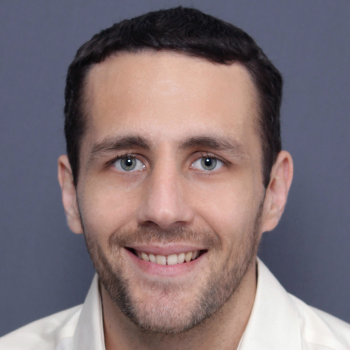
Pascal Geldsetzer - Assistant Professor of Medicine (Primary Care & Population Health)
Research interests: The broad objective of our research is to improve population health through the application of novel methodological approaches in large existing datasets. One stream of our work applies novel approaches for causal inference in large electronic health record datasets to determine the real-life effectiveness of common clinical interventions, including medication effectiveness. A second stream applies deep learning techniques in satellite imagery with the aim of monitoring health indicators in low- and middle-income country settings. A third stream uses data from mega-cohorts to better understand the relationship between salt intake and health outcomes.

Paul George - Assistant Professor of Neurology & Neurological Sciences
Research interests: Stroke is the leading cause of disability in the United States, drastically disrupting the lives of stroke survivors and their caretakers. The George Lab's research focuses on improving stroke diagnostics as well as engineering new methods to enhance stroke recovery. The lab's primary focus is applying novel bioengineering techniques to understand the mechanisms of neural recovery (primarily in stroke) and discovering methods to improve patient recovery. They use rodent models of stroke combined with biomaterial techniques, stem cell transplants, and microfabrication to achieve these aims and evaluate our methods with behavior testing and various imaging techniques. Please visit their lab webpage to find out more!
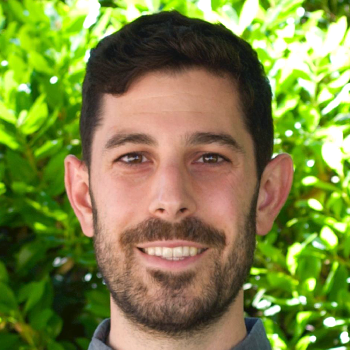
William Giardino - Assistant Professor (Research) of Psychiatry & Behavioral Sciences (Sleep Medicine)
Research interests: The Giardino Lab of Circuits & Systems Neuroscience in Stanford's Department of Psychiatry & Behavioral Sciences is currently accepting applicants for postdoctoral-level researchers. We aim to decipher the neural mechanisms underlying psychiatric conditions of stress, addiction, and sleep disturbances. Our work uses genetic, pharmacological, physiological, anatomical, optical, and computational approaches in freely-behaving mice to monitor, manipulate, and map the neural circuits, synapses, and signaling mechanisms driving approach/avoidance behaviors, drug-seeking, food intake, social interactions, sleep/wake cycles, and other arousal states. Research topics include Stress & Reward, Alcohol Addiction, Sex Differences, Wakefulness/Arousal, Neuropeptide Release & Signaling, and Feeding & Metabolism. Research Approaches include: Neuromodulation (optogenetics, chemogenetics), Neurophysiological recordings (fiber photometry, calcium imaging, EEG/EMG), Neurogenetics (CRISPR/Cas9 editing, Cre/loxP recombination, viral gene transfer, mouse genetics), Neuroanatomy (circuit tracing, immunohistochemistry, in situ hybridization, confocal & light sheet microscopy), Neuropharmacology (alcohol & drug self-administration, receptor mechanisms), Computation (neural circuit modeling, machine learning analysis of behavioral & physiological datasets), Behavior and Evolution (rodent model organisms, cross-species comparisons), and Translation (interdisciplinary and clinical collaborations, mental health treatment development). Check out the lab website!

Anna Gloyn - Professor of Pediatrics (Endocrinology) and (by courtesy) of Genetics
Research interests: The consistent focus of Dr. Anna Gloyn's research has been using naturally occurring mutations in humans as tools to identity critical regulatory pathways and insights into normal physiology. Her early post-doctoral research led to the identification a new genetic etiology for permanent and transient neonatal diabetes due to KCNJ11 mutations and resulted in one of the first examples of precision medicine, where the determination of the molecular genetic etiology lead to improved treatment options for patients. Dr. Gloyn's current research projects are focused on the translation of genetic association signals for type 2 diabetes and glyemic traits into cellular and molecular mechanisms for beta-cell dysfunction and diabetes. Her group uses a variety of complementary approaches, including human genetics, functional genomics, physiology and islet-biology to dissect out the molecular mechanisms driving disease pathogenesis. Projects in the “wet lab” use state-of-the-art technologies including CRISPR-Cas 9 genome editing in both human IPS cells for bespoke studies and coupled with high-throughput genome-wide screens of pancreatic beta-cell function whilst “dry lab” projects capitalize on the large in house (epi)genomic datasets the team have generated in human islets and beta-cell models of diabetes. Check out more on the lab website!
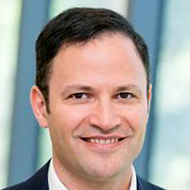
Jeffrey L. Goldberg - Blumenkranz Smead Professor
Research interests: Our lab is focused on translational regenerative medicine approaches to preserve or restore vision in glaucoma and other major neurodegenerative diseases of the eye and visual system. We leverage animal models of disease and develop small molecule approaches and gene and cell therapies, targeting neuroprotective and axon growth pathways. Moving top therapeutic candidates quickly into human testing is a priority. Check out Dr. Goldberg's lab website!

Natalia Gomez-Ospina - Assistant Professor of Pediatrics
Research interests: Dr. Gomez-Ospina is a physician-scientist and medical geneticist with a strong interest in diagnosing, managing, and treating genetic diseases. Dr. Gomez-Ospina is a true translational scientist. Her main goal is to improve the care and lives of patients with genetic disorders using the most efficient and direct approaches. Her research program is primarily focused on developing therapies for the largest class of neurodegenerative diseases in children known as lysosomal storage disorders. Her lab uses stem cells and genome editing as the primary tools to design and develop these therapies. The lab also aims to understand the fundamental biological process that will enable these therapies to become safer, and more effective. In addition to regenerative medicine, the lab collaborates to develop tools to serve patients with unmet needs. For example, the lab has an ongoing collaboration to create point-of-care testing for serum ammonia levels. Such a device will significantly improve the quality of life of children and families with metabolic disorders that manifest with elevations in ammonia levels. Check out the lab website!

Zinaida Good - Assistant Professor of Medicine (Immunology & Rheumatology)
Research interests: Dr. Zinaida Good's lab develops advanced T cell immunotherapies for cancer and autoimmune diseases. We build advanced algorithms for high-dimensional single-cell and spatial data to identify mechanisms of therapy resistance based on primary patient samples. Actionable clinical insights enable us to test preclinically novel T cell design strategies in cellular assays and mouse models to gather sufficient preclinical data for clinical translation. Our goal is to make a real impact on patient outcomes.

William Goodyer - Assistant Professor of Pediatrics (Cardiology)
Research interests: The Goodyer lab is dedicated to improving the diagnosis and treatment of cardiac rhythm disorders. We leverage molecular biology, bioinformatics, human induced pluripotent stem cells, advanced imaging and murine genetics among other tools, to study the cardiac conduction system (CCS), with the ultimate goal of achieving translational opportunities to improve the management of heart rhythm disorders. Check out the lab website!

Ian Gotlib - Professor of Psychology
Research interests: In the Stanford Neurodevelopment, Affect, and Psychopathology (SNAP) Lab at Stanford we broadly examine psychobiological factors that place children, adolescents, and adults at risk for developing depression and engaging in suicidal behaviors, as well as processes that are protective in this context. In particular, we are examining the differential effects of early life stress and exposure to environmental toxins on trajectories of neurodevelopment in boys and girls through puberty to explain the increased prevalence of depression and suicidal behaviors in girls in adolescence and are extending this work to study a large developmental sample in Singapore. We have also been documenting the effects of the COVID-19 pandemic on adolescents’ mental health and brain development. Check out more on the lab website!
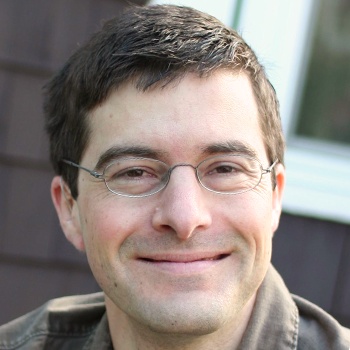
Nathanael Gray - Krishnan-Shah Family Professor
Research interests: Our laboratory develops new classes of small molecules to address challenging anti-cancer targets. In particular we are interested in making bivalent compounds that can hijack endogenous cellular factors to effect new functions. We are looking to reprogram cellular signaling pathways through the development of bivalent molecules that can recruit kinases, phosphatases, ubiquitin ligases and transcription factors. Check out the lab website!

Tamar Green - Assistant Professor of Psychiatry & Behavioral Sciences (Interdisciplinary Brain Sciences)
Research interests: The Brain Imaging, Development, and Genetic (BRIDGE) Lab focuses on disorders associated with child development, such as attention deficits, hyperactivity, and autism spectrum disorders. We apply two unique approaches in our research. Initially, we take a "genetic first" approach studying children with known genetic conditions who present with attention problems, hyperactivity, and deficits in social cognition. This approach contrasts with traditional research focused on the genetic causes of developmental disorders. Second, we apply in-depth phenotyping of the child's brain, genes, and behavior using brain imaging, genetic testing, and behavioral assessment. Consequently, we aim to uncover biological principles of how genetic variation and its associated downstream pathways affect children's developmental disorders. Check out the website!

Wendy Gu - Assistant Professor of Mechanical Engineering and (by courtesy) Materials Science & Engineering
Research interests: Dr. Gu is interested in discussing a project on programmable self-assembly of colloidal microparticles, in which particle shape is used to control assembly. The Gu Lab's approach uses two-photon lithography to make particles of arbitrary, complex shapes (tetrahedrons, tetrapods, screws, etc.), beyond what can be made using bottom-up chemical synthesis or traditional lithography. This allows us to study the interparticle forces that lead to self-assembly (e.g. lock and key assemblies), as well as make hierarchical materials with micro to macroscale features. Check out more on the lab website!

Boris Heifets - Assistant Professor of Anesthesiology, Perioperative & Pain Medicine
Research interests: The Heifets Lab is focused on mechanisms involved in psychedelic therapeutics, as well asother non-ordinary states of consciousness. We take a highly translational approach and work with a network of collaborators to carry out mouse studies, human therapeutic trials and human mechanistic studies. Major projects include: 1) defining the neural circuits responsible for MDMA's prosocial effect in mice, 2) testing applications of psilocybin for chronic pain (mouse and clinical studies), 3) using anesthetic agents to modulate brain activity and experiences associated with psychedelics (mouse and clinical) and 4) developing anesthetic-induced dream states to treat stress disorders. Check out the lab website!
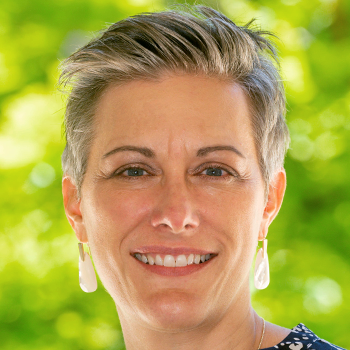
Sarah Heilshorn - Professor of Materials Science and Engineering and (by courtesy) of Bioengineering and of Chemical Engineering
Research interests: The Heilshorn lab develops new biomaterials to: create biomimetic culture platforms for human organ-typic cultures (e.g. organoids), develop tissue engineering scaffolds to promote healing, design injectable methods to deliver cell and drug therapies for regenerative medicine, study peptide and protein self-assembly into biomimetic structures, and develop platforms for biomanufacturing of cell-based therapies. Check out the lab website!
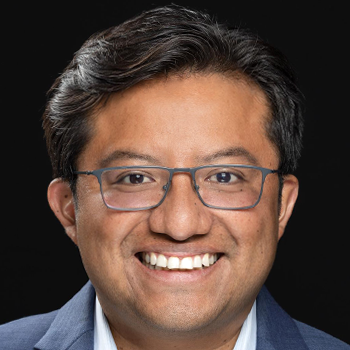
Rogelio Hernández-López - Assistant Professor of Bioengineering and ofGenetics
Research interests: Our research integrates mechanistic cell biology and synthetic biology to understand and engineer fundamental cellular behaviors such as recognition and communication. We are currently interested in developing novel receptors and therapeutic T cells targeted to solid tumors. We are also launching new research programs to expand our approach to other molecules, cells and tissues for a variety of applications. Check out the lab website!
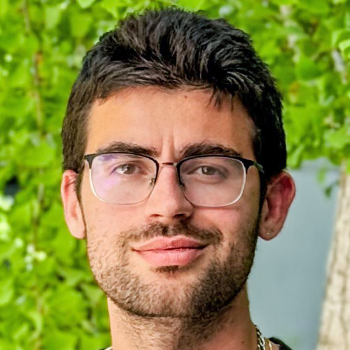
Vayu Hill-Maini - Assistant Professor of Bioengineering
Research interests: Filamentous fungi are an untapped source of biological potential to address climate change. In addition to their critical ecological roles in carbon sequestration and plant and soil health, fungi readily convert waste into sustainable foods, materials, and chemicals. However, our ability to harness fungi for human benefit is limited by our poor understanding of their metabolism and the lack of precise tools for genetic manipulation. Our group develops synthetic biology tools for fungi. We couple these tools with omics methods to characterize and engineer fungi for applications in food and sustainability. We are searching for postdocs who are excited to work at the interface of these fields and advance fungi for planetary health. Check out the lab website!
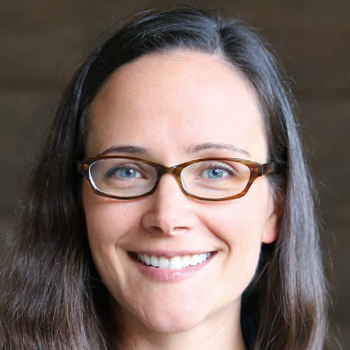
Brooke Howitt - Associate Professor of Pathology
Research interests: Dr. Howitt's research interests include the study of gynecologic cancers, integrating clinical, histologic, immunophenotypic, and molecular features together to better understand disease classification, prognostification, and progression. Specific interests include rare uterine sarcomas, fallopian tube epithelium as the source of ovarian high grade serous carcinomas, and endometrial carcinoma. Dr. Howitt is seeking postdoctoral fellows with some level of computational/bioinformatics expertise and knowledge of R and python required.

Yang Hu - Professor of Ophthalmology
Research interests: Dr. Yang Hu's research focus is Neural Repair of the CNS: Viewing through RGC Neuroprotection and Optic Nerve Regeneration. The ultimate goal of the laboratory is to develop efficient therapeutic strategies to achieve CNS neural repair, through promoting neuroprotection, axon regeneration and functional recovery. Specifically, we are using state-of-the-art tools and creating novel tools to study retinal ganglion cell (RGC) and optic nerve in various optic neuropathies including traumatic, glaucomatous and inflammatory optic nerve injuries, to fully understand the molecular mechanisms of CNS neurodegeneration and axon regeneration failure.

Ruth Huttenhain - Assistant Professor of Molecular & Cellular Physiology
Research interests: Dr. Ruth Huttenhain's group deciphers how G protein-coupled receptors decode extracellular cues into dynamic and context-specific cellular signaling networks to elicit diverse physiologic responses. They exploit quantitative proteomics to capture the spatiotemporal organization of signaling networks combined with functional genomics to study their impact on physiology.

Haruka Itakura - Assistant Professor of Medicine (Oncology)
Research interests: The Itakura Lab is looking for a highly creative and motivated researcher to conduct applied research in the areas of machine learning and pattern/feature detection with a focus on computer vision/image processing and analysis orgenomic/molecular data processing and analysis. The objective for this research is to develop and apply computational frameworks for the integrative analysis of multi-omic biomedical data to accelerate discoveries in cancer diagnostics and therapeutics. The Itakura lab focuses on implementing machine learning frameworks and radiogenomic approaches on heterogeneous, multi-scale cancer data (e.g., clinical, imaging, histopathologic, genomic, transcriptomic, epigenomic, proteomic). Projects include prediction modeling of survival and treatment responses, biomarker (feature) discovery, cancer subtype discovery, and identification of new therapeutic targets. Guided by critical and relevant problems in oncology, these projects will have the potential to lead to clinically actionable or translatable findings. Check out Dr. Itakura's Stanford profile!

Theodore Jardetzky - Professor of Structural Biology
Research interests: The Jardetzky laboratory has ongoing projects to study the process of viral entry and antibody-mediated neutralization for a number of human pathogens, including coronaviruses (SARS-CoV2), herpesviruses (HCMV/EBV) and paramyxoviruses (RSV/HMPV/Nipah). We collaborate with leading immunology and virology laboratories and focus on providing a structural basis for understanding mechanistic aspects of viral entry and antibody interactions with viral entry glycoproteins using X-ray crystallography and cryo-EM. We are seeking postdoctoral fellows with backgrounds in biochemistry, immunology or structural biology to join this effort. Check out Dr. Jardetzky's Stanford profile!

Julia Kaltschmidt - Associate Professor of Neurosurgery
Research interests: The enteric nervous system (ENS) in the gut presents a translational model relevant to many human illnesses, however, relatively little is known about the development, connectivity and function of ENS circuitry. The mouse ENS is experimentally tractable and allows application of molecular genetic and high-resolution imaging techniques, as well as innovative in vivo experimental approaches. The Kaltschmidt lab aims to (i) map ENS circuit connectivity and (ii) explore functional consequences of ENS circuit abnormalities. Check out the lab website!

Corey Keller - Assistant Professor of Psychiatry & Behavioral Sciences
Research interests: The overarching goal of Dr. Keller’s Laboratory is to improve brain stimulation treatment for neurological and psychiatric disease. Specifically, his lab seeks to improve Transcranial Magnetic Stimulation (TMS) and other brain stimulation techniques by better understanding the fundamental principles of human brain plasticity and building trans-diagnostic real-time monitoring platforms for personalized brain stimulation. TMS is a non-invasive brain stimulation technique focused on normalizing dysfunctional brain networks and is FDA-approved for depression, OCD, migraines, and smoking cessation, with clinical trials underway for PTSD, addiction, and Alzheimers. Unfortunately, TMS is typically applied in a one-size-fits-all manner without reference to one’s biology, and as such we are in critical need for a personalized and more effective approach. Dr. Keller performs translational research at the intersection of neuroscience, electrophysiology, brain stimulation, neuroengineering, psychiatry, and precision therapeutics. His work suggests that brain-based biomarkers may be used to predict non-responders to TMS treatment, monitor brain networks during intervention, and be used to propose novel targets and treatment paradigms. Dr. Keller emphasizes an environment conducive to team-based learning in order to train the next generation of clinically-informed circuit neuroscientists, question the status quo with rigorous scientific experiments, and make important contributions in understanding how brain stimulation alters neural circuits and behavior and translate these findings to develop targeted, personalized, and more effective treatments. Check out Dr. Keller's lab website!

Peter S. Kim - Professor of Biochemistry
Research interests: The Kim Lab at Stanford aims to create vaccines to address some of the most important unmet infectious disease needs and to devise new strategies to enable vaccine generation. There are known monoclonal antibodies (mAbs) that can provide broad protection against HIV-1, pandemic influenza virus and Ebola virus, for example – but generating vaccines that elicit antibodies with properties of these mAbs has not been possible. Accordingly, a major goal of our research is to devise new protein-engineering strategies to enable immunofocusing – the creation of vaccines capable of eliciting an antibody response against a targeted epitope. Check out the lab website for more information!

Amanda Kirane - Assistant Professor of Surgery (General Surgery)
Research interests: The Kirane Lab is a robust preclinical and translational lab focused on mechanisms of resistance to immunotherapy, myeloid cell biology, and novel biomarker assay development. We work in both mouse and patient-derived organoid models of melanoma with a robust library of our melanoma patients treated at the Stanford Cancer Institue. Our current, exceptionally talented fellows, work across disciplines in engineering, materials science, computational immunology, nano-chemistry, and molecular signaling to develop novel therapeutics and diagnostics in refractory patient populations with specific interest in optical assays, functional and spatial protein interactions in the tumor microenvironment, and biogeographical variances in nodal versus brain metastases. Please feel free to reach out directly with interest, and check out the lab website.
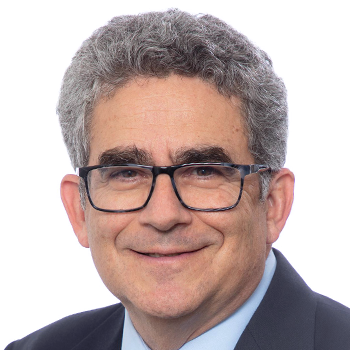
Jonathan D. Klein - Professor of Pediatrics (Adolescent Medicine)
Research interests: Our research focuses on advancing adolescent and young adult health and community-based research and program evaluation in both domestic and global settings. Current projects address policy analyses of variation in US State policies and their impact on adolescent health and well-being; engagement of clinical leaders in countries and communities in non-communicable disease prevention, health care delivery improvement, and accountability measurement; and the effects of long COVID on adolescents and young adults. Visit Dr. Klein's Stanford Profile to learn more.

Juliet Knowles - Assistant Professor of Neurology & Neurological Sciences and Pediatrics
Research interests: We are conducting basic and translational research related to pediatric epilepsy. We are particularly interested in neuron-glial interactions in epilepsy pathogenesis, and we recently discovered that activity-dependent myelin plasticity can promote epilepsy progression (Knowles et al, Nature Neuroscience 2022). We also study genetic forms of epilepsy including developmental and epileptic encephalopathies. We use a combination of molecular, neurophysiological and MR-imaging approaches. Check out the lab website!
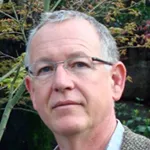
Ron Kopito - Professor of Biology
Research interests: The Kopito Lab studies protein quality control (PQC) in the endoplasmic reticulum (ER) and its role in modulating diverse human diseases. We recently conducted a landmark genetic screen that identified a surprising connection between ER PQC and a novel protein modification system that conjugates the small ubiquitin-like protein UFM1 to ribosomes at the ER. We've identified a surprising role for this modification system in maintaining the integrity of protein synthesis in the secretory pathway and discovered an unexpected connections between PQC, ribosome biology and inherited hematological disorders. This research uncovers fundamental new cell biology and mechanisms of disease. Check out Dr. Kopito's lab website!

Ellen Kuhl - Professor of Mechanical Engineering and (by courtesy) of Bioengineering
Research interests: In the Living Matter Lab, we integrate physics-based modeling with machine learning and create interactive simulation tools to understand, explore, and predict the dynamics of living systems. We study the life cycle of the human brain, from development to aging, and the human heart, both healthy and diseased. In our most recent work, we use data-driven modeling to integrate classical epidemiology modeling and machine learning to infer critical disease parameters of COVID-19 from reported case data to make informed predictions and guide political decision making. Check out the lab website!
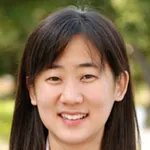
Jin Hyung Lee - Associate Professor of Neurology, of Neurosurgery and of Bioengineering and (by courtesy) of Electrical Engineering
Research interests: The Lee Lab uses interdisciplinary approaches from biology and engineering to analyze, debug, and manipulate systems-level brain circuits. We seek to understand the connectivity and function of these large-scale networks in order to drive the development of new therapies for neurological diseases. This research finds its basic building blocks in areas ranging from medical imaging and signal processing to genetics and molecular biology. Our lab is interested in understanding how the brain works at the systems level. Current projects include: Advanced MR Imaging Development, and Visualization of Global Brain Dynamics in Health and Disease. Check out the lab website!

Craig Levin - Professor of Radiology (Molecular Imaging Program at Stanford/Nuclear Medicine) and (by courtesy) of Physics, of Electrical Engineering, and of Bioengineering
Research interests: Multi-modality imaging of living subjects. The Levin Lab is looking for interested and motivated fellows to participate in the following research activities: 1. Exploring novel concepts in molecular imaging instrumentation, including design, construction, and characterization of new sensors and imaging systems. 2. Studying associated signal processing algorithms and computations, including tomographic image reconstruction, data correction, and machine learning. 3. Translating these novel imaging system technologies into clinical and/or preclinical studies involving the non-invasive characterization and quantification of the molecular pathways of disease.
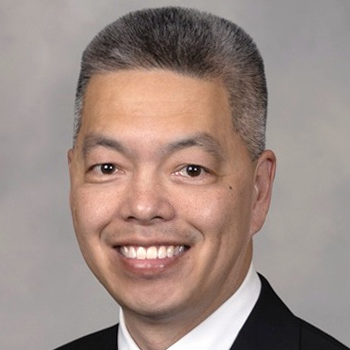
Billy Loo, Jr. - Professor of Radiation Oncology (Radiation Therapy)
Research interests: Dr. Loo is the principal investigator of the FLASH Sciences Lab @Stanford. Our research is focused on the novel paradigm of ultra-rapid radiation, and understanding its surprising biological advantages for increasing the therapeutic index of cancer therapy as well as paving the way for its clinical translation. Our multidisciplinary lab spans radiation and cancer biology research using in vivo tumor and normal tissue models, particle accelerator and medical physics, and engineering and technology (including rapid prototyping tools, advanced computational modeling, and robotics). As such, we welcome researchers across a broad spectrum of scientific backgrounds. Check out the lab website.
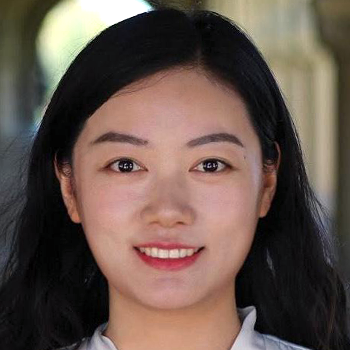
Guolan Lu - Assistant Professor of Urology
Research interests: About Our Lab: The Lu Lab is dedicated to developing and integrating cutting-edge technologies in biomedical imaging, artificial intelligence, and spatial multi-omics to uncover the principles governing the tissue architecture and the mechanisms driving disease initiation, progression, and therapeutic response. Our ultimate goal is to translate this knowledge into next-generation theragnostics for both benign and malignant diseases.
What We Offer: Our lab is equipped with state-of-the-art spatial omics platforms, including single-molecule spatial transcriptomics and single-cell spatial proteomics, providing the tools to generate groundbreaking cellular and molecular insights. As part of our team, you will have the chance to work on high-impact projects that sit at the cutting edge of spatial omics, AI-driven analysis, and systems biology. This is an exciting opportunity to contribute to transformative cancer research, with a direct impact on understanding disease mechanisms and developing novel therapies. You’ll be immersed in a collaborative, interdisciplinary environment, working alongside experts in generative AI, computational biology, and cancer biology and immunology. Our lab values innovation and supports your growth with personalized mentorship and opportunities to advance your academic and professional goals.
Key Research Areas: We are actively exploring:
• Pioneering 3D spatial multi-omics and AI-driven computational approaches to map drug-target-microenvironment interactions and redefine tissue architecture.
• Developing AI-powered spatiotemporal multi-omics methods to reveal key vulnerabilities within the tumor microenvironment and guide novel therapeutic strategies.
• Investigating the mechanisms that drive cancer progression and therapeutic resistance, using single-cell spatial analysis and systems biology approaches.
Who Should Apply: We are looking for passionate students with interests in:
• Single-cell spatial multi-omics
• Light-sheet microscope and tissue clearing
• AI/machine learning in biology
• Cancer biology, immunotherapy, and therapeutic development

Merritt Maduke - Associate Professor of Molecular & Cellular Physiology
Research interests: Ion transport across the hydrophobic barrier of the cell membrane is a primary challenge faced by all cells. Such transport sets up and exploits ion gradients, thus providing the basic energy and signaling events that are the foundation of life. It is fascinating to study the molecular mechanisms of the proteins that catalyze this transport. Our lab uses a combination of biophysical methods to investigate membrane-protein structure and dynamics together with electrophysiological analyses to directly measure function to determine the molecular mechanisms ion channels and transporters. We apply this expertise in several interdisciplinary collaborations: to determine the physiological function of chloride channels in the brain, to develop therapeutics to treat hyponatremia, and to investigate the mechanism of ultrasound neuromodulation. Check out Dr. Maduke's lab website!

Robbie Majzner - Assistant Professor of Pediatrics (Hematology & Oncology)
Research interests: The Majzner lab focuses on the optimization of CAR T cells for the treatment of solid tumors. Interested post-docs/fellows will work on engineering CAR T cells better able to recognize low amounts of target antigen (to overcome tumor heterogeneity) and to discriminate between healthy and normal tissues. The project will draw on state of the art bioengineering to generate novel CAR T cell constructs with improved efficacy.

Ivana Maric - Assistant Professor (Research) of Pediatrics (Neonatology)
Research interests: Dr. Ivana Maric is an Assistant Professor in the Pediatrics Department at the Stanford University School of Medicine. Her research focuses on applying machine learning and artificial intelligence to improving maternal and neonatal health. Her main focus has been on developing machine learning models for early prediction of adverse outcomes of pregnancy from omics and electronic health records data, that could guide development of low-cost, point of care diagnostic tools. Her main interest is in solutions that are applicable worldwide and especially in low-resource settings.

Alison Marsden - Associate Professor of Pediatrics (Cardiology) and of Bioengineering and (by courtesy) of Mechanical Engineering
Research interests: The Marsden lab is seeking fellows with interest in patient-specific modeling and simulation of blood flow and tissue mechanics in cardiovascular disease. We are developing methodology in advanced finite element simulations of blood flow, fluid structure interaction, nonlinear tissue mechanics, uncertainty quantification, machine learning for medical image processing, and optimization. Applications of our simulations include pediatric and congenital heart disease, coronary artery disease, and pulmonary hypertension. We work closely with the Stanford school of medicine on clinical applications, and we also uphold a culture of open source software and open data contributions. We are seeking candidates with a background in mechanical engineering, computational science, and biomechanics with an interest in interdisciplinary research. Check out the lab website!

Nicole M. Martinez - Assistant Professor of Chemical & Systems Biology and of Developmental Biology
Research interests: Our lab is broadly interested in RNA-based mechanisms of gene regulation. Precise control of gene expression at the level of messenger RNA processing is necessary for development, response to environmental cues and its dysregulation is the basis of many diseases. Eukaryotic mRNA are extensively modified with non-canonical nucleotides that have the potential to regulate pre-mRNA processing steps such as splicing and 3’ end processing for gene regulation. Dysregulation of RNA-modifying enzymes cause a wide range of human diseases, underscoring the need to elucidate this exciting layer of gene regulation. Our current research studies mechanisms and functions of RNA modifications in RNA processing and their roles in development and disease, including during neurodevelopment and cancer. We use a combination of molecular biology, biochemistry, genomics, genetics, and systems biology. Check out the lab website!
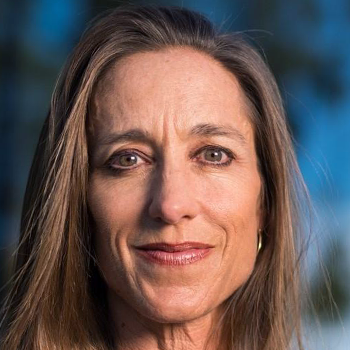
Tracey McLaughlin - Professor of Medicine (Endocrinology)
Research interests: The McLaughlin lab studioes obesity, adipose tissue and metabolic disease in humans (mechanisms linking adipose tissue to insulin resistance and diabetes). A fellow would learn to work with adipocytes performing collagenase digestion, lipolysis assay, glucose uptake, adipocyte differentiation, siRNA knockdown, cell culture, rtPCR or possibly RNA seq in collaboration with our core facilities, or cytof in collaboration with our core facilities. The McLaughlin lab does weight gain and loss studies and drug studies including glp1. They will also be studying Mediterranean diet, and are going to be looking at the intersection of adipose tissue and insulin resistance and diet with regard to cancer. Check out the lab website to learn more.

Mark Mercola - Professor of Medicine (Cardiovascular)
Research interests: Mercola Lab projects are focused on genetic cardiac (dilated, hypertrophic and restrictive) myopathies. Disease-in-dish human iPSC-based models are used in high throughput functional physiological studies capable of scanning the proteome for pathogenic mechanisms and potential drug targets. Translational studies advance candidate therapeutics through recursive cycles of chemical optimization and functional testing in human iPSC and animal models. Check out the lab website!

Daria Mochly-Rosen - George D. Smith Professor of Translational Medicine
Research interests: Regulation of mitochondrial dysfunction in models of human diseases, including neurodegenerative diseases and/or inflammatory bowel disease in culture and/or in vivo. The research uses unique pharmacological tools, cell and animal models to examine: 1. the role of dysregulation of mitochondrial dynamics and mitochondrial fragmentation or 2. the role of various aldehyde dehydrogenases in regulating aldehydic load and mitochondrial and cell functions.

Ashby Morrison - Associate Professor of Biology
Research interests: The Morrison Lab is interested in chromatin-mediated mechanisms involved in genomic and metabolic stability. We utilize diverse approaches, including cellular, molecular and computational analyses, in our research. For studies related to genomic stability, we are investigating how tumor suppressors and oncogenes alter nuclear architecture to accelerate mutagenesis during cancer evolution. For studies related to metabolic stability, we are examining how histone modifications are altered in coordination with metabolic status to control transcription and proliferative capacity. Check out the lab website!
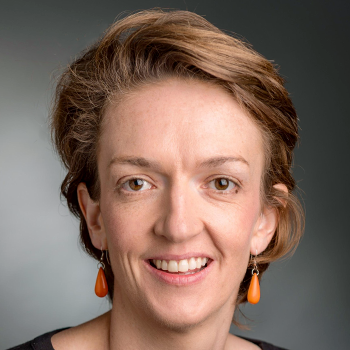
Ann Mullally - Professor of Medicine (Hematology)
Research interests: The Mullally Lab studies myeloid blood cancers from their earliest origins to overt leukemia. We use a range of approaches including genomics, CRISPR, single-cell technologies, as well as mouse models and cell & molecular biology to advance the understanding of myeloid cancer biology, with the goal of translating this into improved treatment options for patients. We are particularly interested in early pathogenesis i.e. clonal hematopoiesis, malignant stem cells, bone marrow fibrosis and developing genetic and cellular therapies to treat myeloid blood cancers. We welcome fellows interested in hematology, cancer biology and immunology. Check out our lab website!

Lucy O’Brien - Assistant Professor of Molecular and Cellular Physiology
Research interests: The O'Brien Lab has a position available to investigate the cell dynamics that underlie renewal and remodeling of epithelial organs in vivo. Our goal is to understand real-time behaviors of stem cells and their progeny and how they are influenced by physiological signals and epithelial tissue architecture. Experimental strategies include Drosophila genetic manipulation, live animal imaging, computational image analysis, and modeling. Check out the lab website!
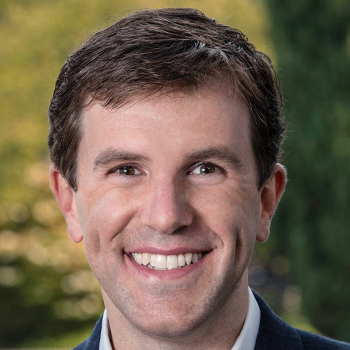
Scott Owen - Assistant Professor of Neurosurgery
Research interests: The Owen lab studies how neuromodulation can shape the activity of targeted cell types and circuits to guide behavior. Our goal is to understand how specialized physiology, connectivity, and cell-signaling support the diverse functions of individual neuronal cell types. How can a deeper understanding of these features guide future therapeutic interventions for neurological diseases including Autism, Obsessive-Compulsive Disorder, and Parkinson’s Disease? To address these questions, we integrate a diverse set of experimental approaches, including human and mouse brain slice physiology, single-cell RNA sequencing, operant mouse behavior, in vivo physiology, imaging, and tool development. Check out the lab website!

Daniel Palanker - Director of the Hansen Experimental Physics Laboratory and Professor of Ophthalmology and (by courtesy) of Electrical Engineering
Research interests: Dr. Palanker is working on optical and electronic technologies for diagnostic, therapeutic, surgical and prosthetic applications, primarily in ophthalmology. In the field of biomedical optics, these studies include interferometric imaging of neural signals, and laser-tissue interactions with applications to retinal laser therapy and to ocular surgery. In the field of electro-neural interfaces, Dr. Palanker is developing retinal prosthesis for restoration of sight to the blind and implants for electronic control of organs. Check out the lab website!

Sergiu Pasca - Associate Professor of Psychiatry and Behavioral Sciences
Research interests: Dr. Sergiu Pasca's laboratory at Stanford is interested in understanding the rules governing brain assembly and the mechanisms of neuropsychiatric disease. A critical challenge in understanding the intricate programs underlying development and dysfunction of the human brain is the lack of direct access to intact, functioning human brain tissue. Towards this, the lab developed and applied novel stem cell approaches and tools to recapitulate, probe and manipulate human brain development and assembly. The lab introduced the use of instructive signals for reproducibly deriving self-organizing 3D cellular structures named brain region-specific spheroids or organoids (Nature Methods, 2015; Nature Protocols, 2018; Nature Methods, 2019; Nature Neuroscience, 2019; Science, 2020). Moreover, the lab pioneered a modular system to integrate 3D brain region-specific organoids and study migration and neural circuit formation in functional preparations known as assembloids (Nature, 2017; Science, 2019). Current projects include developing next-generation organoid systems, uncovering the genetic and molecular mechanisms of neuropsychiatric disorders (Nature Medicine, 2020), including convergence of pathways in disease, and gaining insights into the unique molecular programs underlying human brain development.

Claudia Petritsch - Associate Professor (Research) of Neurosurgery
Research interests: Pediatric glioma comprise a heterogenous group of tumors, which makes designing preclinical models that represent individual subtypes important and consequential for personalized cancer medicine. The Petritsch Lab leverages direct access to neurosurgical tissue to generate patient-derived brain tumor models to study individual tumor types. We generate novel genetically engineered mouse models to target expression of known oncogenic drivers in pediatric glioma to various germinal and non-germinal areas, assessing neuro-anatomical aspects of oncogene sensitivity. Using cell-selective driver line, we investigate brain neural stem and progenitor cells as a likely origin for pediatric gliomas and therapy resistant glioma stem cells, developing models that faithfully recapitulate human tumor development. In immunocompetent, orthotopic mutant glioma model derived from endogenous tumors we assess sensitivities to standard and novel therapies, allowing us to define mechanisms for therapy resistance. In syngeneic, orthotopic gliomas, we define therapy-induced-changes in the tumor microenvironment, including the immune infiltrate, and investigate immune modulatory therapy as novel treatment strategy for children with gliomas. Check out the lab website!
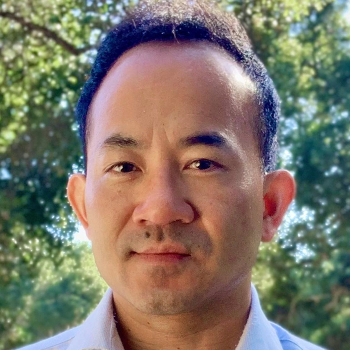
Trung Hoang Minh Pham - Assistant Professor of Pediatrics (Infectious Diseases) and of Microbiology & Immunology
Research interests: The Pham lab brings together immunology, tissue biology, microbiology, and genetics to study innate immunity and infection-induced tissue physiological adaptations. Our goal is to uncover mechanisms underlying tissue immunity and homeostasis that can be harnessed to eradicate infections, promote tissue resilience, and restore health after an infectious attack. Please check out our lab website!

H. Westley Phillips - Assistant Professor of Neurosurgery (Pediatric Neurosurgery)
Research interests: The Phillips Pediatric Research and Innovations in the Molecular Genetics of Epilepsy (P2RIME) laboratory studies the molecular biology of the human brain and the impact of somatic mutations on the neurologic disease. In addition to utilizing the gold-standard methods for genomic analyses, we are also utilizing novel minimally invasive techniques to expand our capacity to provide molecular genetic diagnosis. Furthermore, we are interested in the impact of somatic mosaicism on brain electrophysiology across epileptic networks to establish any relationships with the genetic and electrophysiologic signatures of epilepsy.
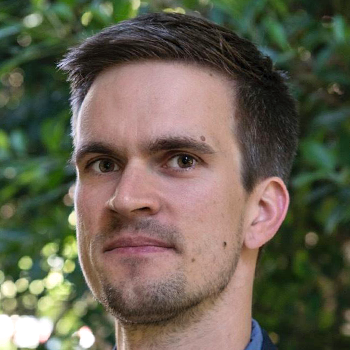
Tino Pleiner - Assistant Professor of Molecular & Cellular Physiology
Research interests: The Pleiner lab combines molecular, cellular and structural biology to study the pathways and molecular machines that regulate protein homeostasis, with a particular focus on membrane protein biogenesis and quality control at the human endoplasmic reticulum. We develop alpaca-derived nanobodies as tools to study and reverse failure of protein homeostasis under disease conditions. Check out the lab website!

Manu Prakash - Associate Professor of Bioengineering
Research interests: We are a curiosity driven lab focused on physical biology and frugal science - in an attempt to understand the elegance of beauty of biological systems and solve planetary scale challenges via simple, frugal solutions in healthcare and ecological monitoring. See publications for details. Check out the lab website!
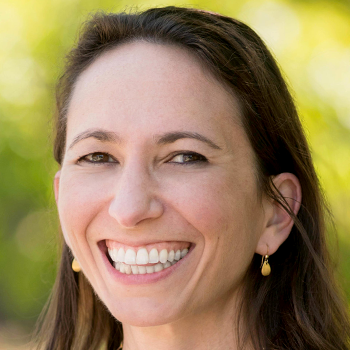
Laura Prolo - Assistant Professor of Neurosurgery
Research interests: The Prolo lab is dedicated to finding new therapies for childhood brain tumors, which are the leading cause of cancer death in children. Specifically, we focus on identifying genes and epigenetic changes necessary for high-grade glioma invasion and how these pathways can be targeted for treatment. We utilize CRISPR/Cas9 technologies in primary tumor models to investigate the necessity of candidate genes in vitro and in xenograft animal models. The lab employs a multidisciplinary approach and is highly collaborative with groups across Stanford to combine expertise in genetics, cellular biology, neurosurgery, bioinformatics, and clinical medicine. Check out the lab website!
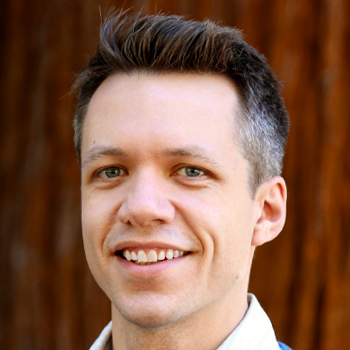
Nathan Reticker-Flynn - Assistant Professor of Otolaryngology - Head & Neck Surgery (OHNS)
Research interests: The Reticker-Flynn lab focuses on tumor-immune interactions during cancer metastasis. We employ animal models, synthetic biology, and systems approaches to build an understanding of the tolerance mechanisms and co-evolutionary dynamics underpinning tumor-immune interactions during metastasis and use insights gleaned from these studies to develop novel technologies and engineered therapies for the treatment of metastatic disease and immunological disorders. We have extensive interests in understanding the induction of tumor-specific immune tolerance within lymph nodes and the subsequent generation of systemic tolerance through processes involving regulatory T cells. Our studies make use of a variety of bulk and single-cell sequencing modalities in combination with a range of mouse models and functional assays. We further seek to develop immunotherapies that target lymph node biology to break immunological tolerance and promote anti-tumor immune activation. Check out the lab website!
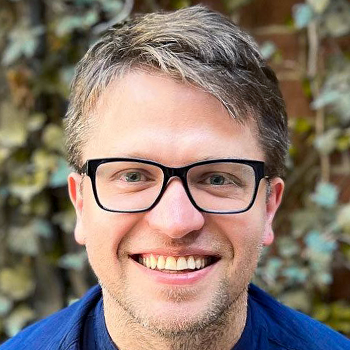
Kacper Rogala - Assistant Professor of Structural Biology and Chemical & Systems Biology
Research interests: How are nutrients recognized by their protein sensors? How is their transport across cellular and intracellular membranes regulated? And, how is nutrient sensing integrated with other chemical signals, such as hormones, to determine cellular decisions, especially the decision: to grow or not to grow? We are a team of structural and chemical biologists aiming to answer these questions at the level of ångstroms, nanometers, and micrometers. Many proteins in these pathways are deregulated in cancer, and we are developing targeted chemical probes to modulate their activity in cells and organisms. Please see our lab website: rogala.stanford.edu.
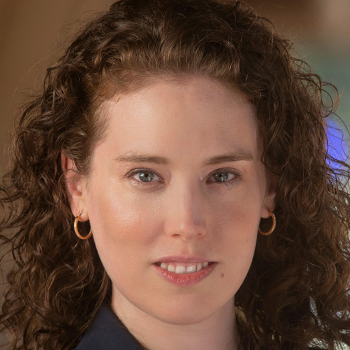
Sherri Rose - Professor of Health Policy
Research interests: The Stanford Health Policy Data Science Lab led by Professor Sherri Rose is a group of interdisciplinary researchers who develop and apply quantitative methods to solve problems in health policy, leveraging techniques from statistics, computer science, economics, epidemiology, and decision science. Our research areas include ethical algorithms in health care, plan payment risk adjustment, chronic kidney disease, and health program evaluation. Check out the lab website!

Jason B. Ross - Assistant Professor of Radiation Oncology (Radiation Therapy)
Research interests: Dr. Jason Ross is a physician-scientist and Assistant Professor in the Department of Radiation Oncology at Stanford University. He received his BS in Biological Sciences from Stanford University, MD from Weill Cornell Medical College, and PhD from The Rockefeller University. He conducted postdoctoral research as a Kaplan Research Fellow with co-advisors Dr. Irving Weissman and Dr. Maximilian Diehn at Stanford University, where he studied hematopoietic stem cells and the influence of radiotherapy on the tumor-immune micro-environment. His laboratory studies normal, dysfunctional, and malignant stem cells in the context aging, cancer, and chronic disease. Check out the lab website!
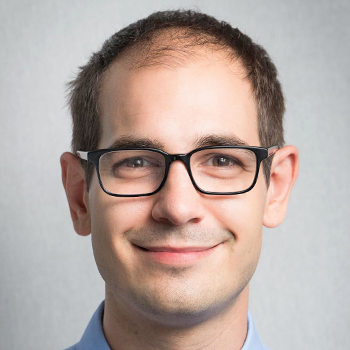
Theodore Roth - Assistant Professor of Pathology
Research interests: The Roth Lab develops, applies, and translates scalable genetic manipulation technologies in primary human cells and complex in vivo tissue environments. Working with students, trainees, and staff with backgrounds across bioengineering, genetics, immunology, oncology, and pathology, the lab has developed CRISPR-All, a unified genetic perturbation language able to arbitrarily and combinatorially examine genetic perturbations across perturbation type and scale in primary human cells. Ongoing applications of CRISPR-All in the lab have revealed surprising capacities to synthetically engineer human cells beyond evolved cellular states. These new capacities to perturb human cell’s genetics beyond their evolved functionality drives ongoing work to understand the biology and therapeutic potential of synthetic cell state engineering - in essence learning how to build new human genes tailor made for a specific cell and specific environment to drive previously inaccessible therapeutic cellular functions.

Florentine Rutaganira - Assistant Professor of Biochemistry and Developmental Biology
Research interests: The Rutaganira (FUNR) Lab uses choanoflagellates, the closest living single-celled relatives to animals, to study the origin of animal cell communication. We apply chemical, genetic, and cell biological tools to probe choanoflagellate cell-cell communication. Our current focus is uncovering the evolution of phosphotyrosine signaling, cell-cell adhesion, and choanoflagellate-bacterial symbiosis. Our work has implications for understanding not only animal cell signaling, but also the origin of multicellularity in animals. Check out the lab website!
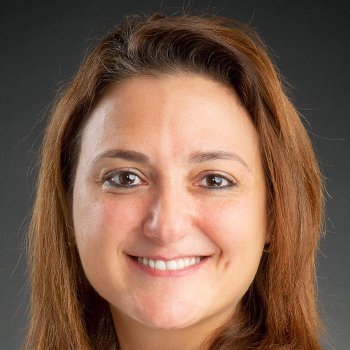
Raya Saab - Lindhard Family Professor of Pediatric Cancer Biology
Research interests: Our lab studies oncogenic signaling and tumor suppression in the childhood tumor rhabdomyosarcoma, to identify key mediators of invasion and metastasis, which is the most common cause of treatment failure clinically. We use preclinical in vitro and in vivo models, including murine and human cell lines, and mouse models of disease. We have recently uncovered a paracrine role for rhabdomyosarcoma-secreted exosomes in impacting biology of stromal cells. Rhabdomyosarcoma-derived exosomes carry specific miRNA cargo that imparts an invasive and migratory phenotype on normal recipient fibroblasts, and proteomic analysis revealed specific and unique pathways relevant to the two different molecular rhabdomyosarcoma subtypes that are driven by distinct oncogenic pathways. We identified that the driver oncogene in fusion-positive rhabdomyosarcoma, PAX3-FOXO1, modulates exosome cargo to promote invasion, migration, and angiogenic properties, and identified specific microRNA and protein cargo acting as effectors of PAX3-FOXO1 exosome-mediated signaling, including modulation of oxidative stress response and cell survival signaling. Our ongoing work is focused on interrogating specific paracrine signaling pathways and molecular mechanisms of metastatic disease progression in rhabdomyosarcoma, for potential therapeutic targeting.
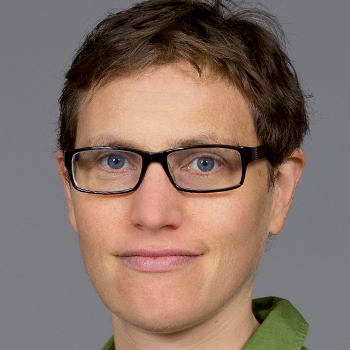
Julia Salzman - Associate Professor of Biomedical Data Science, of Biochemistry and (by courtesy) of Statistics and of Biology
Research interests: Julia Salzman is an Associate Professor in the Department of Biomedical Data Science, Biochemistry and Statistics (by Courtesy). She received her A.B. in Mathematics from Princeton University Magna Cum Laude and Ph.D. from Stanford University in the Department of Statistics supervised by Dr. Persi Diaconis. As a postdoctoral scholar in Dr. Patrick Brown’s lab, Dr. Salzman developed statistical algorithms that led to the discovery of a ubiquitous expression of circular RNA missed by other computational and experimental approaches for decades. Her research spans the interface of statistical methodology and genomics aiming to use data driven experiments to uncover organizing principles of biological regulation, historically focused on RNA processing. Recently her group has introduced a new approach to sequencing analysis called SPLASH that performs inference on raw sequencing data, bypassing genome alignment. This approach is providing new insights into genome regulation, mobile genetic elements, single cell sequencing data and in many other domains.

Naima Sharaf - Assistant Professor of Biology and (by courtesy) of Structural Biology
Research interests: Proteins embedded in the cell envelope of bacteria perform multiple important functions, including signaling, nutrient acquisition, and export of virulence factors. Understanding the structure and functions of these proteins is critical for the development of new anti-bacterial therapies. Currently, the Sharaf lab focuses on both ABC transporters and lipoproteins of Gram-negative bacteria. The ultimate goal of the research to translate basic lipoprotein research into novel therapuetics. Check out the lab website!

Kevin Shea - Chambers-Okamura Endowed Professor of Pediatric Orthopaedics
Research interests: Dr. Kevin Shea is an orthopaedic surgeon at Stanford University Medical Center and Lucile Packard Children's Hospital with great research interests in pediatric orthopaedics and sports medicine. His research interests are particularly focused on sports-related injuries in young athletes, with extensive work in ACL reconstruction and meniscus repair techniques. Dr. Shea's laboratory conducts anatomic, surgical, and biomechanical evaluations of pediatric cadaveric tissue to determine optimal treatment practices for knee injuries in pediatric patients. His collaborative work with non-profit company AlloSource involves studying rare pediatric tissue to address a large variety of research questions in this understudied population. As a founding member of the PRiSM Society (Pediatric Research in Sports Medicine) and the ROCK (Research in OsteoChondritis of the Knee) Multi-center Study Group, Dr. Shea has been instrumental in advancing the field of pediatric sports medicine. His research extends to osteochondritis dissecans and cartilage injuries, which are significant areas of concern in young athletes. Dr. Shea's work also includes the development of the SCORE prospective cohort registry for pediatric sports arthroscopy outcomes and complications, contributing valuable data to improve surgical techniques and patient outcomes. With over 240 scientific papers and book chapters to his name, Dr. Shea's research has significantly impacted the understanding and treatment of sports-related injuries in pediatric patients. Dr. Shea also has an interest in performance, quality improvement, clinical practice guidelines, and supply chain strategies to optimize value, lower the costs and variation in care, and improve patient outcomes. Key research in this are includes contract negotiations, physician engagement in supply chain decision making, and building effective clinician/administrative/supply chain teams for maximal impact. Please see the following links: Research & Publications | Additional Research Information | PubMed
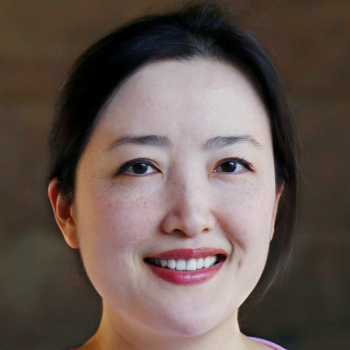
Jeanne Shen - Associate Professor of Pathology
Research interests: The Shen lab conducts interdisciplinary research to address clinically important problems using machine learning and other artificial intelligence techniques. We are seeking postdoctoral fellows and visiting scholars with a strong computational background and interest in leading the development of multimodality (including, but not limited to, clinical, histopathologic, radiologic, genomic, and transcriptomic data-based) clinical deep learning and other machine learning models to enable improved diagnosis, prognostication, and prediction of treatment response for precision medicine across various oncologic and non-oncologic diseases. We value creative, highly motivated individuals with strong problem-solving skills who are enthusiastic about working in a highly multidisciplinary collaborative environment with physicians, computer scientists, biomedical data scientists, and statisticians. Successful candidates will have the opportunity to be jointly based in the Department of Pathology at the Stanford University School of Medicine and at the Center for Artificial Intelligence in Medicine & Imaging (AIMI), with opportunities to work with a diverse and dynamic group of researchers applying AI to solve high-impact problems in healthcare. Check out Dr. Shen's Stanford profile and lab website!

Vipul Sheth - Assistant Professor of Radiology (Body MRI)
Research interests: Our lab’s interests are in the development and translation of imaging technologies geared toward disease detection and characterization to better guide prognosis, treatment, and improve outcomes. My areas of interest are in MRI and PET/MRI for abdominal or pelvic malignancies and whole body imaging particularly for rectal cancer, prostate cancer, cervical cancer, and inflammatory bowel disease. We are also interested in MRI guided procedures including biopsies, cryoablation, and high intensity focused ultrasound for diagnosis and treatment of essential tremor, fibroids, desmoid tumors, prostate cancer, metastatic disease, liver cancer, and other malignancies.

Gen Shinozaki - Associate Professor of Psychiatry & Behavioral Sciences
Research interests: Our lab is using an epigenetics approach to better understand the pathophysiological mechanism of delirium, especially postoperative delirium. As aging is the key risk factor of delirium, we are investigating how genome-wide DNA methylation landscape is changing along with aging to exhibit vulnerability to neuroinflammation and subsequent delirium presentation. As delirium causes long term cognitive decline leading to neurodegeneration processes such as dementia, better understanding delirium pathophysiology can lead to better therapeutics for dementia as well. We are using both clinical human samples as well as mouse models to address these important scientific questions. We welcome motivated and creative mind to join our team! Check out the lab website!

Jan Skotheim - Professor of Biology and (by courtesy) of Chemical & Systems Biology
Research interests: My laboratory investigates how cell growth triggers cell division to control cell size, a crucial factor in cellular function and organismal fitness. There are three primary mechanisms cells use to regulate size that are of interest to our lab: growth rate adjustments, geometric measurements of cell dimensions, and concentration-based biochemical signals. We have made the most progress on the later concentration-based mechanisms. We found that in budding yeast, cell division is triggered by the dilution of Whi5, a cell cycle inhibitor. As cells grow, Whi5 concentration decreases, leading to the activation of cell cycle genes and the initiation of cell division. This dilution model, tested across various organisms including human cells which dilute the functionally similar retinoblastoma protein, suggests that inhibitor dilution is a fundamental mechanism by which cells coordinate growth and division. Building on these findings, we are currently investigating the molecular mechanisms controlling cell cyclin inhibitor dilution in yeast and human cells. We are also working on better understanding the regulation of cell growth per se, and how this is influenced by cell size. Our research aims to expand the understanding of mechanisms and physiology of cell size and growth control, which are fundamental questions in cell and systems biology. Check out the lab website!

Mark A. Skylar-Scott - Assistant Professor of Bioengineering
Research interests: The Skylar-Scott laboratory is developing technologies to advance whole organ engineering: How can we grow hundreds of billions of cells, and assemble them rapidly into functional and vascularized tissues? The HEART program is one of the key projects spearheaded by the Skylar-Scott lab and is supported by the Advanced Research Projects Agency for Health (ARPA-H), which aims to scale up, bioprint, and implant a fully functional human heart into a living pig within five years. Our laboratory is developing a range of technologies in wetware, software, and hardware by combining stem cell engineering, 3D bioprinting, and tissue vascularization and perfusion. Check out the lab website!

Michael Snyder - Stanford W. Ascherman Professor of Genetics
Research interests: Our laboratory uses deep data approaches using omics and wearables for health monitoring and to study complex diseases such as Type 2 diabetes. We have been subtyping diabetes using omics profiling and metabolic tests and using continuous glucose monitoring to detect glucose dysregulation, diabetes subtypes and personalized responses to foods. Check out the lab website!

Randall Stafford - Professor of Medicine (Stanford Prevention Research Center)
Research interests: Dr. Stafford's research centers around the development of health, wellness or prevention. His lab aims to advance scientific understanding of the forces that influence physician and patient behavior, with a focus on evaluating and modifying physician and patient practices to improve health outcomes through prevention. The process by which new medical practices and knowledge are disseminated often fails to serve the best interests of patients. Frequently, new practices are readily adopted without adequate assessment. Paradoxically, other practices with strong evidence-based support are adopted only slowly and then inconsistently. By understanding the determinants of health behaviors, specific factors that facilitate or impede the adoption of appropriate new practices can be identified. These issues are critical to the future of medicine. Check out here for more information!
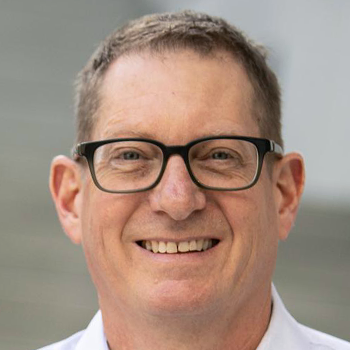
Aaron Straight - Pfeiffer and Herold Families Professor, Professor of Biochemistry and (by courtesy) of Chemical & Systems Biology
Research interests: Our laboratory is interested in understanding the structure and regulation of genomes across the tree of life. We study problems in epigenetic regulation including how histone variants defined chromosomal domains, how noncoding RNA regulates gene activity and how the organization and compartmentalization of the genome regulates its function. We focus on the epigenetic inheritance of centromeres and their role in chromosome segregation. We are developing new tools to discover and characterize chromosome associated noncoding RNA molecules and their sites of action on the genome. We are also studying how complex repeat regions of the genome including transposable elements, centromeric repeats and other repetitive DNA sequences contribute to the functions of normal and disease states. Our approaches include biochemical reconstitution, quantitative imaging, large scale genomic analysis, computation, and cellular dynamics. Check out the lab website!

Sindy Tang - Associate Professor of Mechanical Engineering, Senior Fellow at the Woods Institute for the Environment and Professor (by courtesy) of Radiology and of Bioengineering
Research interests: The long-term goal of Dr. Tang's research program is to harness mass transport in microfluidic systems to accelerate precision medicine and material design for a future with better health and environmental sustainability. Current research areas include: (I) Physics of droplets in microfluidic systems, (II) Interfacial mass transport and self-assembly, and (III) Applications in food allergy, single-cell wound repair, and the bottom-up construction of synthetic cell and tissues in close collaboration with clinicians and biochemists at the Stanford School of Medicine, UCSF, and University of Michigan. Check out the lab website!

Avnesh Thakor - Associate Professor of Radiology (Pediatric Radiology)
Research interests: The Thakor lab is focused on advancing islet transplantation success for diabetes treatment through strategies that enhance islet survival and function post-transplant. We investigate the role of mesenchymal stem cells (MSCs) for their immunomodulatory, anti-inflammatory, and pro-angiogenic properties, which support islets within the hepatic microenvironment. A key approach involves the use of pulsed focused ultrasound (pFUS) to prime MSCs and islets—a novel technique developed and patented by our team. pFUS uses soundwaves to mechanically stimulate MSCs, enhancing their regenerative potential and bioenergetic support to islets. By refining MSC-islet interactions and optimizing spatial coupling, we aim to improve clinical outcomes in islet transplantation. Check out the lab website!
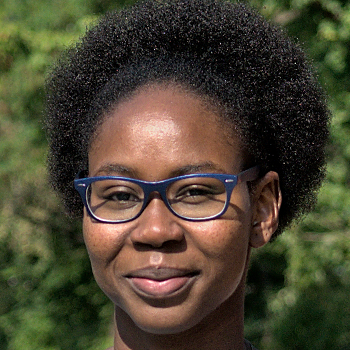
Hawa Racine Thiam - Assistant Professor of Bioengineering and of Microbiology & Immunology
Research interests: Dr. Thiam’s long-term goal is to combine what we learn studying the cellular biophysics of immune cells, together with engineering principles to manipulate, predict and re-design innate immune cells and improve human health. The Thiam Lab research program aims at understanding the Cellular Biophysical mechanisms that allow innate immune cells to accomplish their functions in the physically challenging in vivo environment. Check out the lab website for more information!
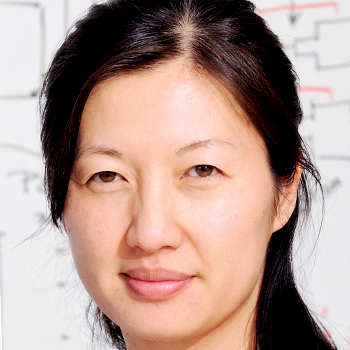
Alice Ting - Professor of Genetics, of Biology and (by courtesy) of Chemistry
Research interests: We are interested in engineering G protein coupled receptors (GPCRs) to develop novel technologies for cell biology and neuroscience; to study location-biased signaling; to map spatial interactomes; to understand mechanism of action of GPCR-targeting drugs such as GLP1 agonists; and to develop better therapies. Overall, we are a lab of chemical biologists focused on the development of technologies for probing molecular and cellular networks. We apply the technologies to understand signaling in the context of neuroscience and metabolism. Check out the lab website!

Natalie Torok - Professor of Medicine (Gastroenterology & Hepatology)
Research interests: The Torok lab focuses on liver fibrosis, studying interactions between metabolic dysregulation and ECM. We have many translational aspects, including new diagnostics/drug development for non-alcoholic and alcoholic steatohepatitis, and primary sclerosing cholangitis. Check out Dr. Torok's profile for more information!
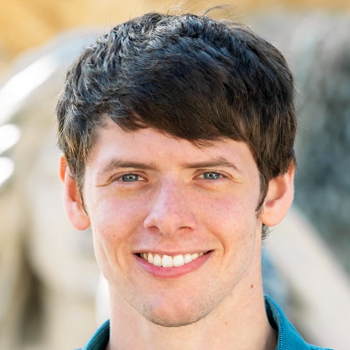
Brian Trippe - Assistant Professor of Statistics
Research interests: In my research I develop probabilistic machine learning methods to address challenges in biotechnology and medicine. Recently, my focus has been on generative modeling and inference algorithms for protein engineering. Check out Dr. Trippe's website for more information!

PJ Utz - Professor of Medicine (Immunology & Rheumatology)
Research interests: The Utz lab focuses on the immune system of patients with immunodeficiency disorders, infections, and autoimmune diseases such as systemic lupus erythematosus (SLE), rheumatoid arthritis (RA), systemic sclerosis (scleroderma), myositis, primary biliary cirrhosis (PBC), Sjögren's disease, insulin dependent diabetes (type I diabetes or IDDM), multiple sclerosis (MS), inflammatory bowel disease (IBD), Castleman’s disease, and mixed connective tissue disease (MCTD). We develop bench-to-bedside technologies, including diagnostics and therapeutics, for human immune diseases. Our lab is also active in vaccine biology, both for inducing protective immunity to pathogens and for turning off immune responses in autoimmune diseases. We have recently pivoted efforts to study SARS-CoV-2, testing the hypothesis that the virus causes autoimmunity. Check out the lab website!
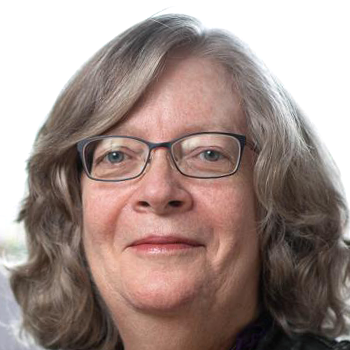
Anne Villeneuve - Berthold and Belle N. Guggenhime Professor and Professor of Developmental Biology and of Genetics
Research interests: The Villeneuve lab investigates the molecular and cellular events underlying the faithful inheritance of chromosomes during meiosis, the specialized cell division program by which diploid organisms generate haploid gametes. These events are crucial for reproduction, since failure to execute them correctly leads to aneuploidy, one of the leading causes of miscarriages and birth defects in humans. One major goal is to understand the mechanisms and regulation of genetic recombination, which is responsible both for reassortment of genetic traits and for promoting segregation of homologous chromosomes during meiosis. An inter-related goal is to understand how meiosis-specific chromosome organization is established, maintained, and remodeled to bring about successful genome inheritance. We approach these issues primarily using the nematode Caenorhabditis elegans, a simple organism that is especially amenable to combining sophisticated microscopic, genetic and genomic approaches in a single experimental system. Our research interrogates the process of meiosis at multiple different scales: 1) at the level of the DNA repair complexes that assemble at the sites of meiotic recombination; 2) at the level of the meiosis-specific chromosome structures that promote, regulate and respond to meiotic recombination events; 3) at the level of DNA organization at the whole-chromosome scale; and 4) at the level of cell biological mechanisms that promote developmental progression of meiosis and execute chromosome segregation. Check out the Villeneuve lab website!

Shan X. Wang - Leland T. Edwards Professor in the School of Engineering and Professor of Electrical Engineering and (by courtesy) of Radiology
Research interests: The Wang lab straddles multidisciplinary fields of biomedicine and microelectronics, with core competencies in magnetic nanotechnology and translation research. Dr. Wang is a leading expert in cancer diagnostics and biosensors. His research and inventions span from biochips, in vitro diagnostics, cancer biomarkers, to magnetoresistive random access memory. He has over 350 publications and over 80 issued/pending patents. His innovative research has spurred 6 companies including Curve Biosciences, which is commercializing a liver cancer blood test based on Next-Gen Sequencing (NGS), and Magic Lifescience, which is commercializing genotyping POCT based on giant magnetoresistive (GMR) biosensors. He is an elected Fellow of the National Academy of Inventors (NAI), American Physical Society (APS), and IEEE. Over the past 15 years the Wang lab made distinctive contributions to magneto-nanosensors and has been considered among the select few pioneers in the use of magnetic nanoparticles (MNP) and GMR sensors for bio-detection of circulating proteins and nucleic acids, and DNA methylation. The Wang lab reported attomolar to femtomolar sensitivities for protein biomarkers, and versatile assays of DNA, RNA, and small molecules. The magneto-nanosensors have spurred many collaborative clinical studies in lung cancer, prostate cancer, liver cancer, colorectal cancer, myocardial infarct, inflammation, autoimmunity, radiation exposure, hepatitis, HIV, Covid-19, marijuana DUI, pain medicine, and fertility improvement. Drs. Wang and de la Zerda coauthored a textbook “Biochips and Medical Imaging”. Check out the lab webpage!
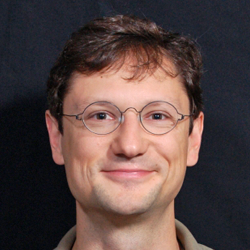
Marius Wernig - Professor of Pathology and (by courtesy) of Chemical & Systems Biology
Research interests: My lab is interested in cellular reprogramming towards neural cell lineages. We study reprogramming mechanisms and use reprogrammed cells to create defined, next generation human cell models to study pathogenetic mechanisms of neuropsychiatric and neurodegenerative disease. Taking advantage of the power of genetic engineering of pluripotent stem cells we envision to develop new cell therapies for the brain including high-efficiency microglia replacement therapies in the context of systemic bone marrow or brain-restricted transplantation. Check out the lab webpage!

Matthew Wheeler - Assistant Professor of Medicine (Cardiovascular Medicine)
Research interests: The Wheeler Lab would be interested in mentoring a fellow in the areas of multiomics data analysis or structural genetic variation detection optimization. We have well-funded bioinformatics projects and a wealth of multiomic data from the Molecular Transducers of Physcial Activity Consortium and from the Center for Undiagnosed Diseases at Stanford. The ideal fellow will have a background in biostatistics or computational biology, although fellows with prior work in a wet lab environment who desire additional experience in bioinformatics would also be considered. Our group includes bioinformaticians, software developers, clinician-scientists, postdoctoral fellows, and research genetic counselors and emphasizes both personal and professional diversity. Depending on the project selected, one or more collaborating faculty members in Statistics, Computational Biology, Pathology or Biomedical Data Sciences would be included in the mentorship team. Check out Dr. Wheeler's Stanford profile!

Nolan Williams - Associate Professor of Psychiatry & Behavioral Sciences and (by courtesy) of Radiology
Research interests: The Brain Stimulation Lab (BSL) at Stanford University, led by Dr. Nolan Williams, applies innovative brain stimulation techniques to investigate and influence the neural networks associated with neuropsychiatric disorders. The lab’s research focuses on using neurostimulation to explore how the brain regulates conflict and control, aiming to develop new models and treatments for these disorders. The mission of the BSL is to leverage advanced neuroimaging techniques to develop new hypotheses about dysfunction within neural networks involved in neuropsychiatric disorders, then test these theories through targeted neuromodulation strategies. Much of the current research in the lab is focused on analyzing the rich datasets acquired within the lab across OCD, major depressive disorder, bipolar disorder, and borderline personality disorder to identify neural predictors of treatment response. Additionally, new trials in the lab aim to optimize deep brain stimulation (DBS) for OCD, using individualized sEEG brain mapping to personalize the stimulation targets and parameters.

Joseph C. Wu - Director, Stanford Cardiovascular Institute, Simon H. Stertzer, MD, Professor and Professor of Radiology
Research interests: The Wu lab works on biological mechanisms of patient-specific and disease-specific induced pluripotent stem cells (iPSCs). The main goals are to (i) understand cardiovascular disease mechanisms, (ii) accelerate drug discovery, (iii) develop "clinical trial in a dish" concept, and (iv) implement precision medicine for prevention and treatment of cardiovascular patients. His lab uses a combination of genomics, stem cells, cellular & molecular biology, physiological testing, and molecular imaging technologies to better understand molecular and pathological processes. Check out the lab website!
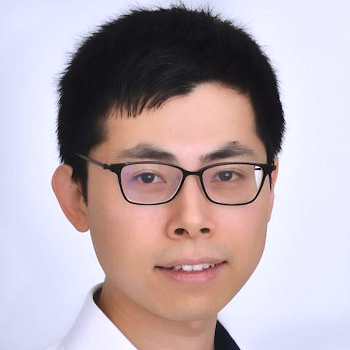
Haopeng Xiao - Assistant Professor of Biochemistry
Research interests: We develop mass spectrometry (MS)-based strategies, combined with data science, to understand mechanisms of metabolic regulation over protein function in health and disease. We aim to use this as a basis to develop translational therapeutics for aging, metabolic disease, and cancer. Currently, we are interested in developing technologies to investigate how proteins regulate metabolites on a proteome-wide scale and in vivo, and how metabolic cues in turn modulate protein abundance and function to maintain metabolic homeostasis. Using in vitro systems and pre-clinical animal models, we aim to unravel the mechanistic roles of select molecular targets in metabolic diseases and cancer, with a long-term goal of developing precision therapeutics based on these insights. Check out the lab website!
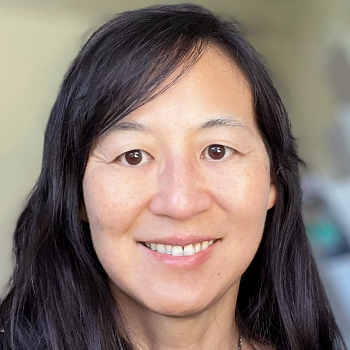
Priscilla Li-ning Yang - Professor of Microbiology & Immunology
Research interests: The Yang lab focuses on studying mechanisms of viral replication and development of new strategies to combat viral pathogens. We molecular virology approaches with chemical biology, medicinal chemistry, and biochemistry/biophysics to tackle challenges in both basic and translational research. Over the past decade, our efforts have centered on two significant problems: first, addressing the challenges that limit our current arsenal of antivirals and second, understanding the specificity and function of host lipids in RNA virus replication. We are keenly interested in discovery of new antiviral targets and strategies and leveraging these discoveries to develop first-in-class small molecule antivirals. Most recently, we have pioneered the development of targeted protein degradation as a strategy to develop small molecules with broadened antiviral spectrum of activity and higher resistance barriers, and to develop antivirals against “undruggable” targets. Check out the lab website!

Yunzhi Peter Yang - Professor of Orthopaedic Surgery and (by courtesy) of Materials Science & Engineering and of Bioengineering
Research interests: Dr. Yunzhi Peter Yang's research interests are in the areas of biomaterials, implant devices, drug delivery, and musculoskeletal tissue engineering. In particular, the Yang lab is interested in developing bio-inspired biomaterials and platform technologies to engineer tissues and organs. They aim to improve understanding of tissue-like chemistry and structure approaches of implant device design and fabrication, how these lead to tissue-like properties and functions, and the extent to which they can enhance clinical outcomes. Check out the lab website!
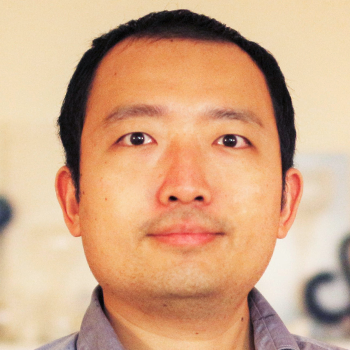
Jiangbin Ye - Assistant Professor of Radiation Oncology
Research interests: (1) Elucidating the manner in which the Warburg effect/metabolic reprogramming is triggered, subsequently remodeling the epigenetic landscape and disrupt differentiation. (2) Developing metabolic therapy that can reverse the Warburg effect and reactivate differentiation, effectively reverting cancer cells back to normal cells. Check out the lab website!
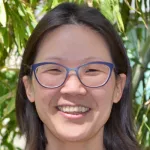
Ellen Yeh - Associate Professor of Pathology and of Microbiology & Immunology
Research interests: The Yeh lab investigates little-studied environmental microbes that could have huge impact on planet health and sustainability. We are exploring the evolution of nitrogen-fixing algae with the goal of using it as a blueprint for synthetic endosymbioses in plants. We are also taking unbiased approaches to uncover new biology in diatoms, an algal group responsible for more photosynthesis than rain forests. Please contact Dr. Yeh to discuss these exciting new directions! Check out Dr. Yeh's lab website!

Bo Yu - Assistant Professor of Obstetrics & Gynecology (Reproductive Endocrinology & Infertility)
Research interests: Dr. Bo Yu’s lab in the Division of Reproductive Biology and Infertility, Department of Obstetrics and Gynecology focuses on: 1) developing novel methods for non-invasive genetic testing in embryos, eggs and sperm; 2) using in vitro models to study embryo implantation and gynecological diseases. We collaborate with the clinical embryology lab and multiple labs in other departments to achieve these goals. Our close-knit group offers a supportive and inclusive environment that encourages creative thinking. Check out the lab website!
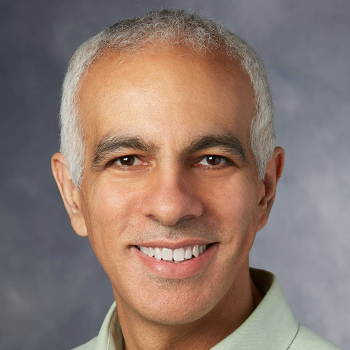
Michael Zeineh - Associate Professor of Radiology (Neuroimaging and Neurointervention)
Research interests: Dr. Michael Zeineh’s lab focuses on using imaging techniques to identify abnormalities in neurodegenerative disorders, particularly those affecting the microcircuitry in regions such as the hippocampal formation. Through in vivo, ex vivo (i.e. post-mortem), and culture methods, the lab has uncovered alterations in iron in the hippocampus that may be causative in Alzheimer’s Disease and underlie the inflammation that is synergistic with amyloid and tau. Recent longitudinal studies advanced MRI techniques to image athletes in high-impact sports have also revealed insights into the mechanisms behind mild traumatic brain injury, including concussion. The interdisciplinary lab has discovered changes that may underly chronic fatigue syndrome, which carries many similarities to Long COVID. The armamentarium of techniques employed includes ultra-high resolution 7.0T MRI & PET-MR (including DTI & QSM), advanced histology, X-ray microscopy and scattered light imaging (with Marios Georgiadis), electron microscopy, as well as exosomal analyses and Raman imaging (with Utkan Demirci). Emerging projects include animal models of mild traumatic brain injury (with David Camarillo), ultra-high field MRI applied to multiple neurological disorders (with Kawin Setsompop/Jon Polimeni), sodium imaging/DTI in epilepsy (with Fernando Boada/Jennifer McNab). For more information on the Zeineh lab, please visit the lab site.
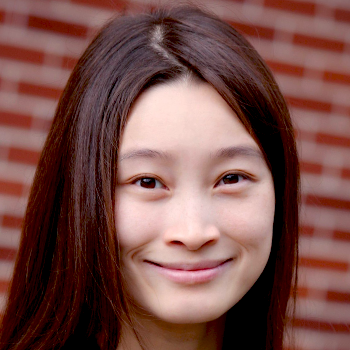
Renee Zhao - Assistant Professor of Mechanical Engineering and (by courtesy) of Materials Science & Engineering
Research interests: The Soft Intelligent Materials Lab (SIM Lab) in Mechanical Engineering is working on developing new thrombectomy technologies to treat blood clots. We currently have opportunities for students and scholars who are interested in involving in biomedical related research. The SIMLab develops bioinspired and biomimetic soft robotic systems by exploring various stimuli-responsive materials that generate large shape change in response to heat, light, magnetic field, stress, etc. We utilize morphing structures such as origami to implement robotic motion through structural deformation driven by stimuli-responsive materials. We adopt these concepts to develop milli-meter scale soft robots for medical applications, especially for minimally invasive surgeries. Available projects are:
- new thrombectomy devices to treat blood clots
- device to treat kidney stones
- magnetic-driven robotic surgery
- biomimetic robots
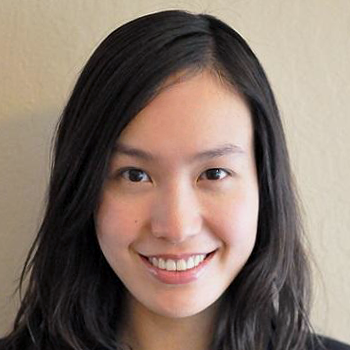
Han Zhu - Assistant Professor of Medicine (Cardiovascular Medicine)
Research interests: Dr. Zhu’s laboratory focuses on myocarditis, cardiac inflammation, and the effects of cancer therapeutics on the cardiovascular system. Her current research employs clinical data, bio-banked samples, and in vivo/in vitro preclinical models in combination with single-cell technologies to study immune-based toxicities in the heart. Dr. Zhu's clinic sees cardio-oncology and cardio-immunology patients and her lab focuses on devising new methods for minimizing cardiovascular complications in the cancer and autoimmune patient populations. Check out the lab website!
